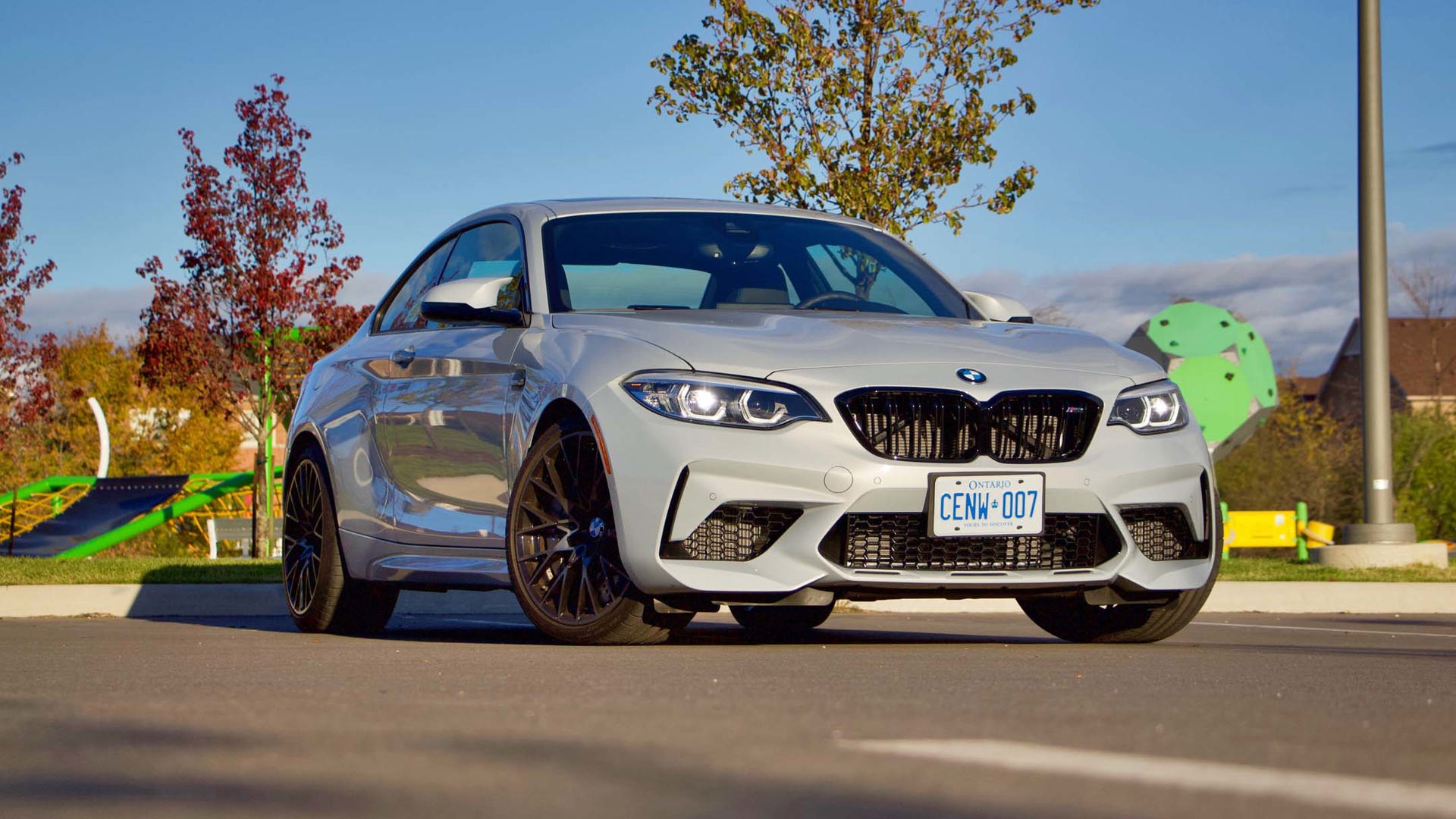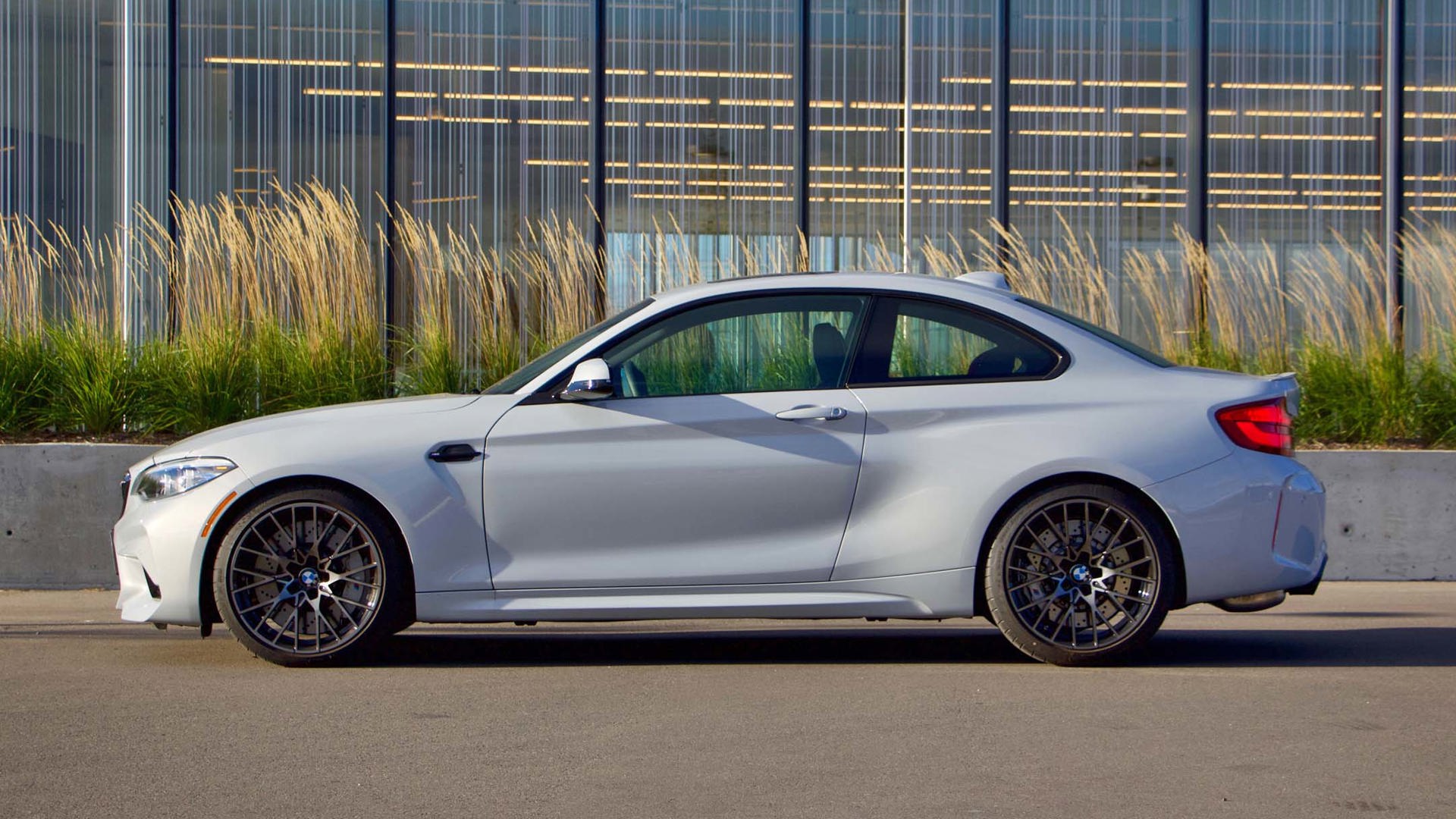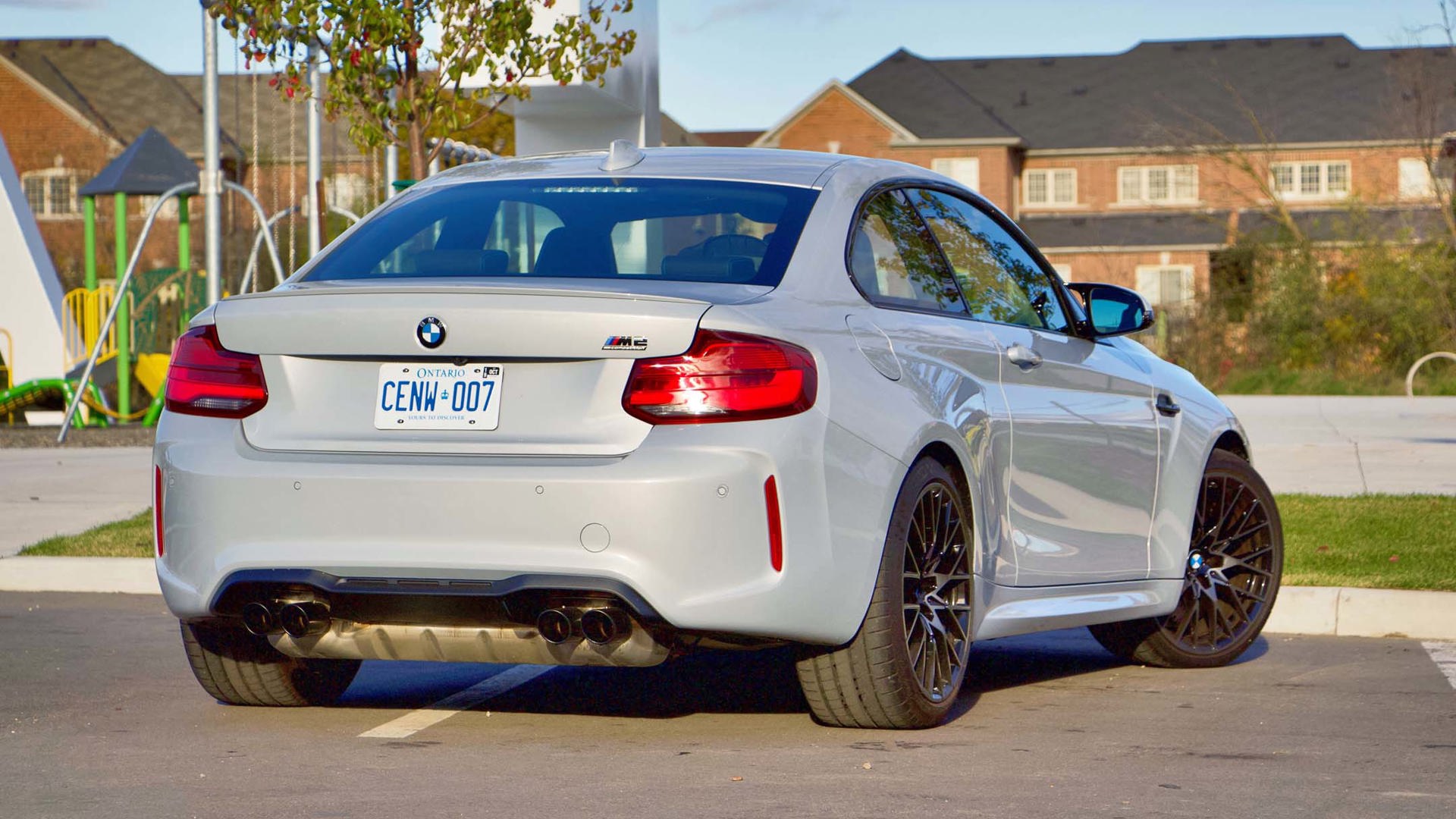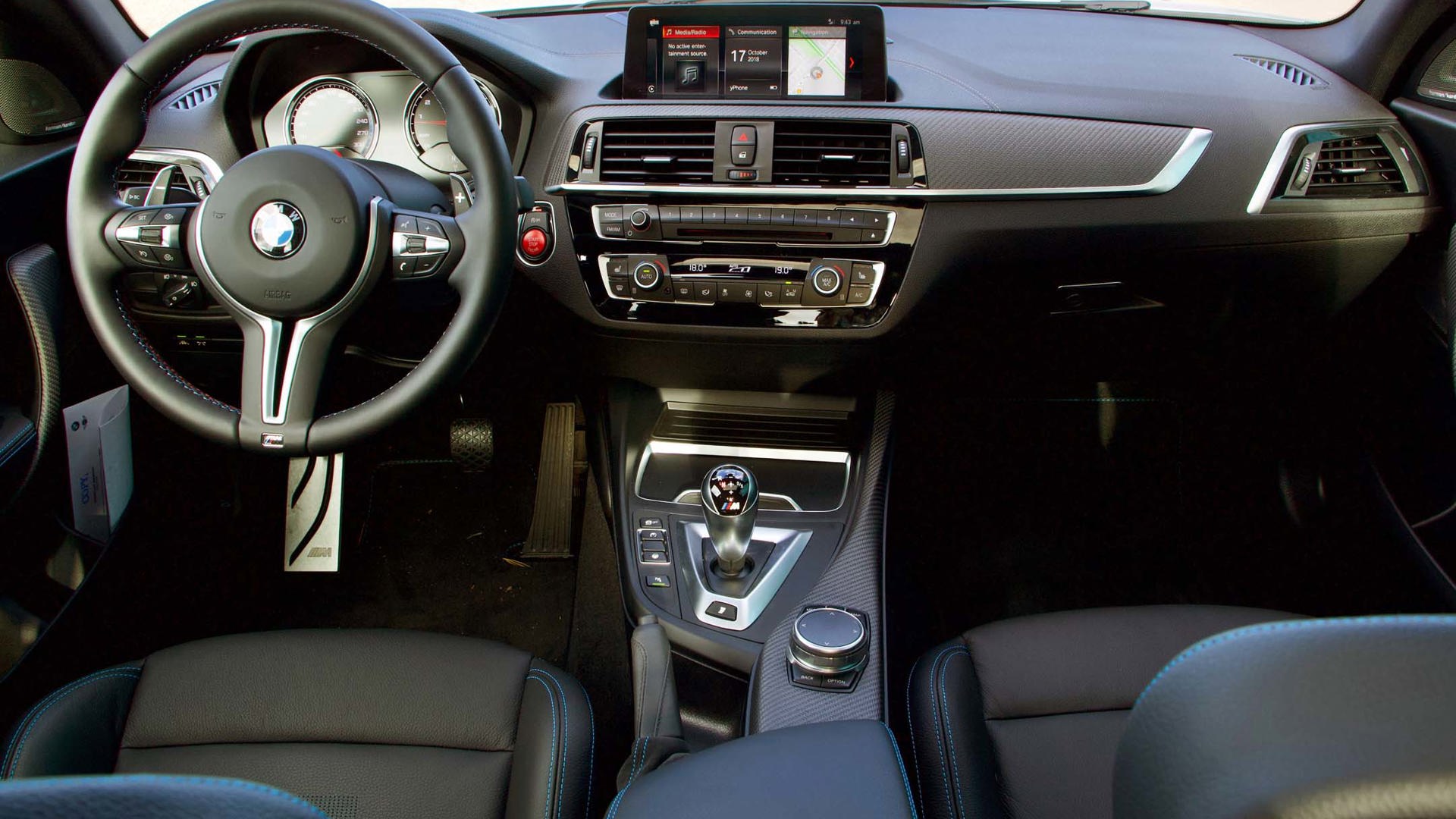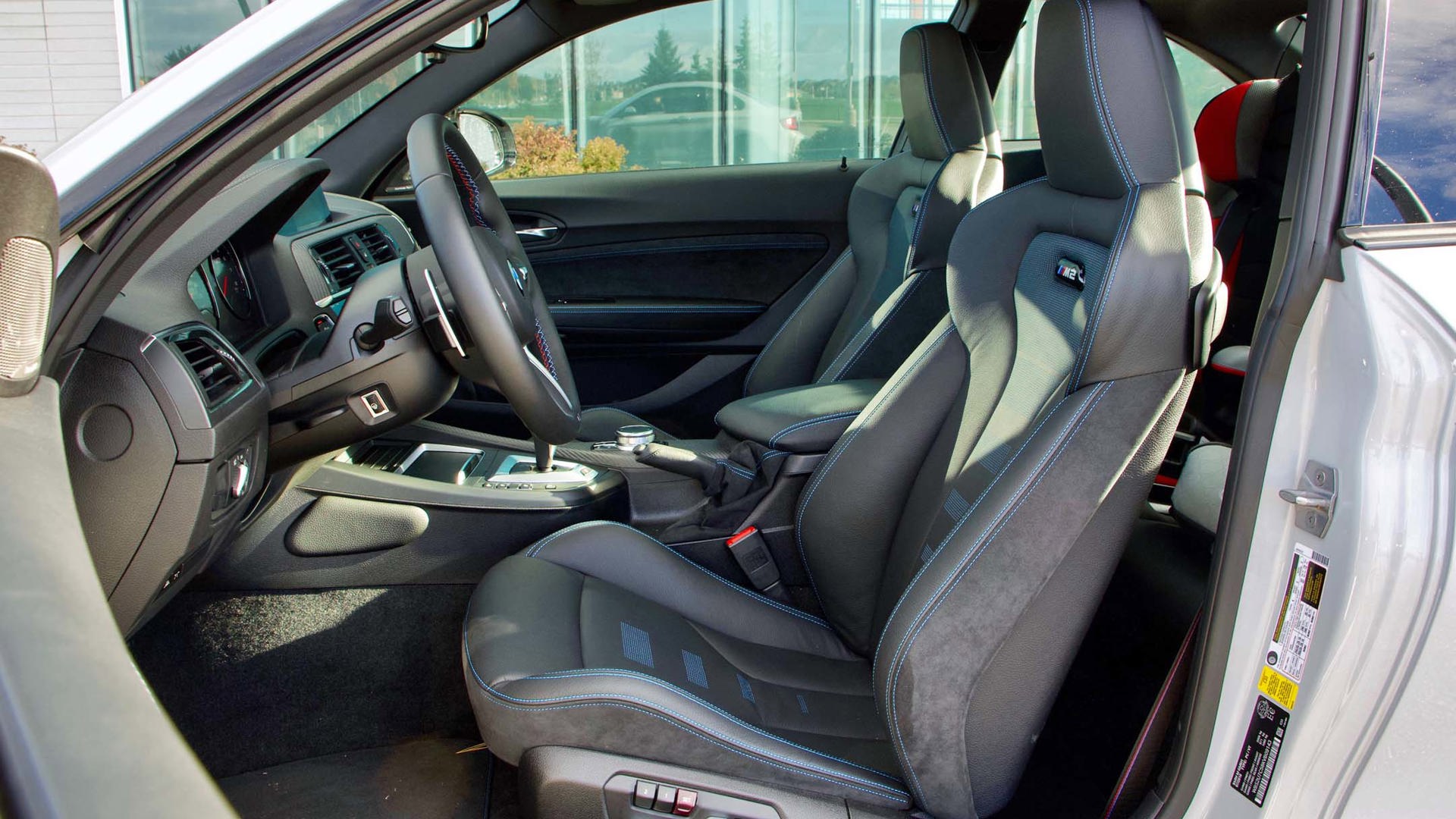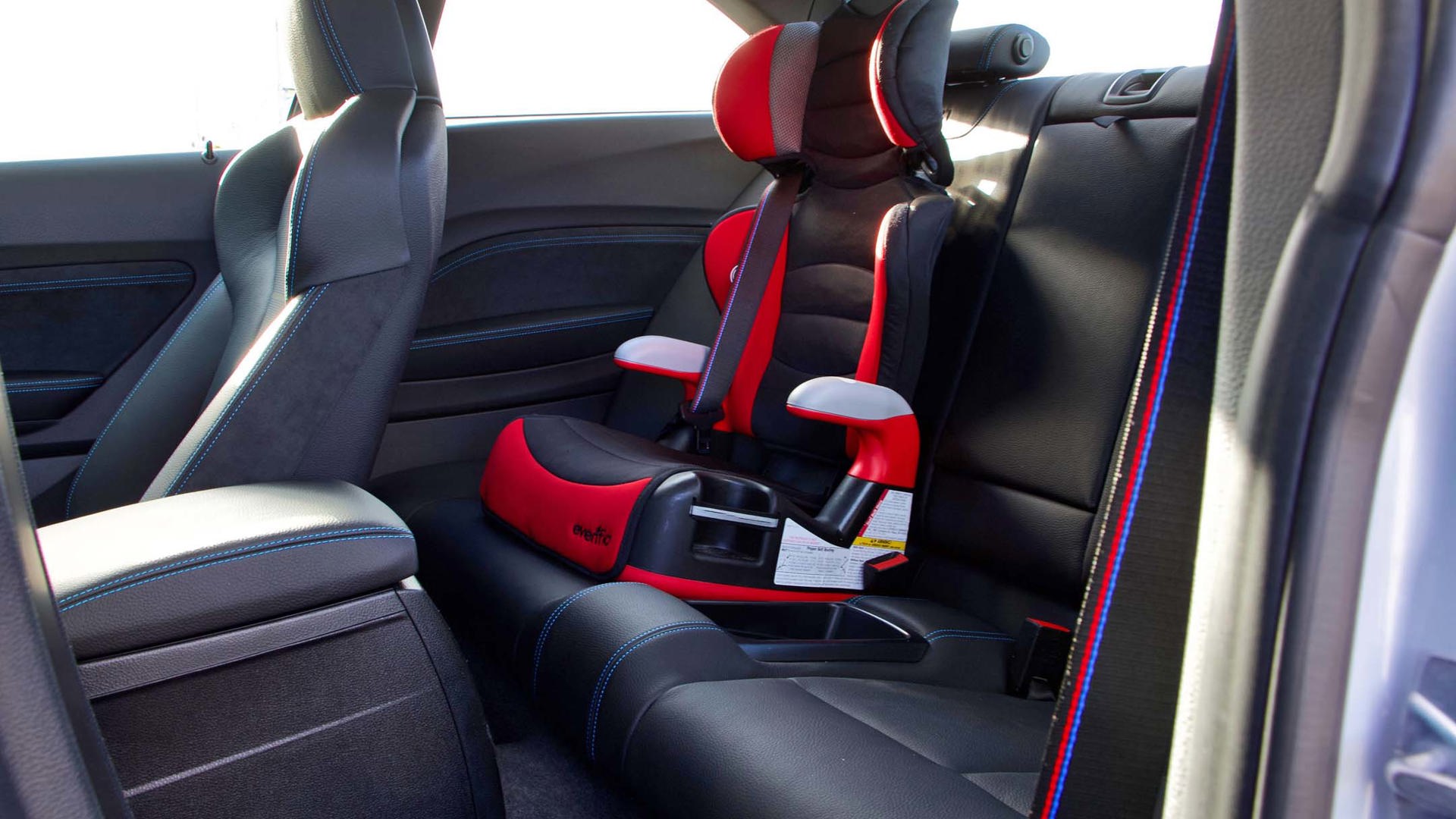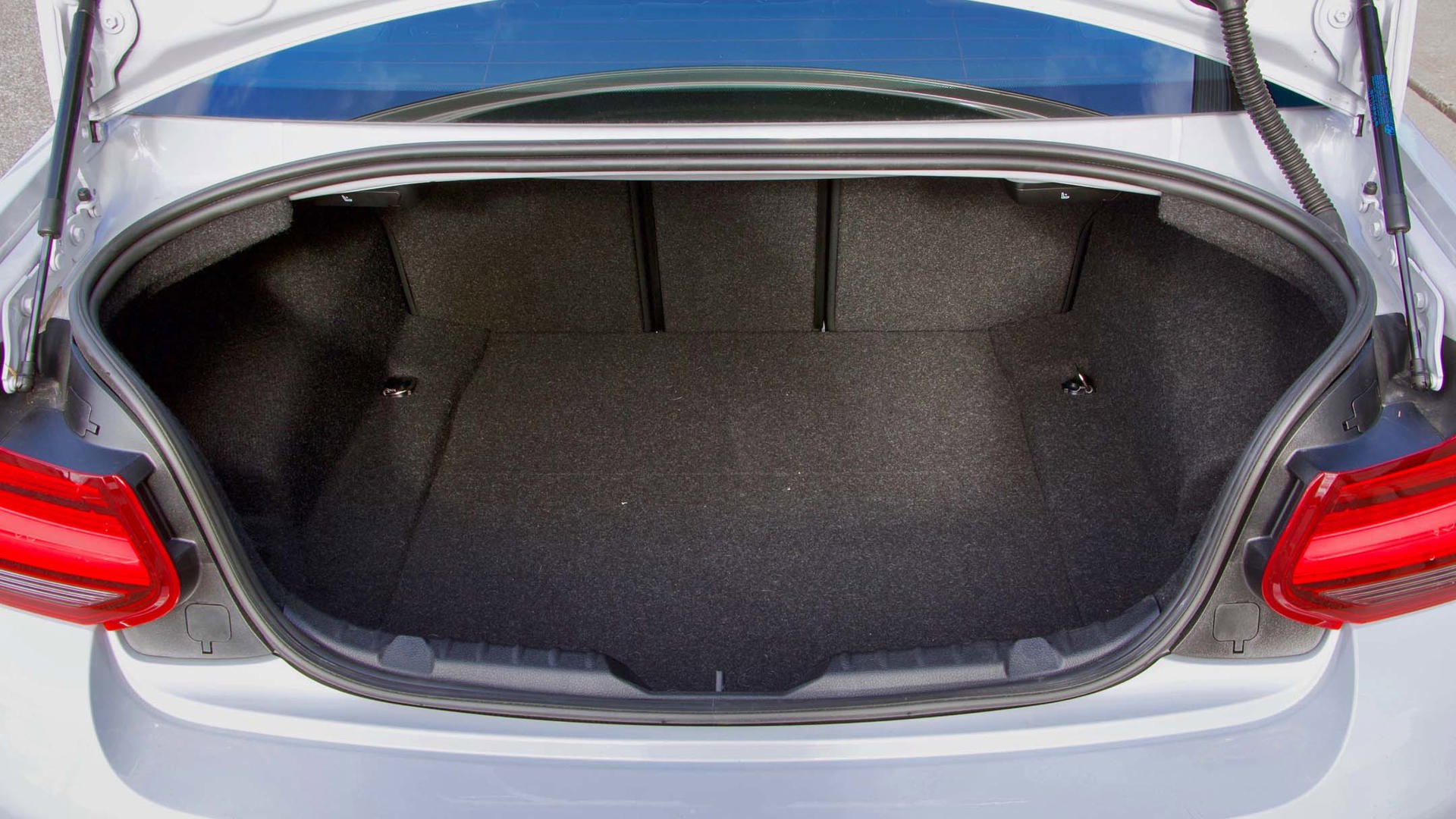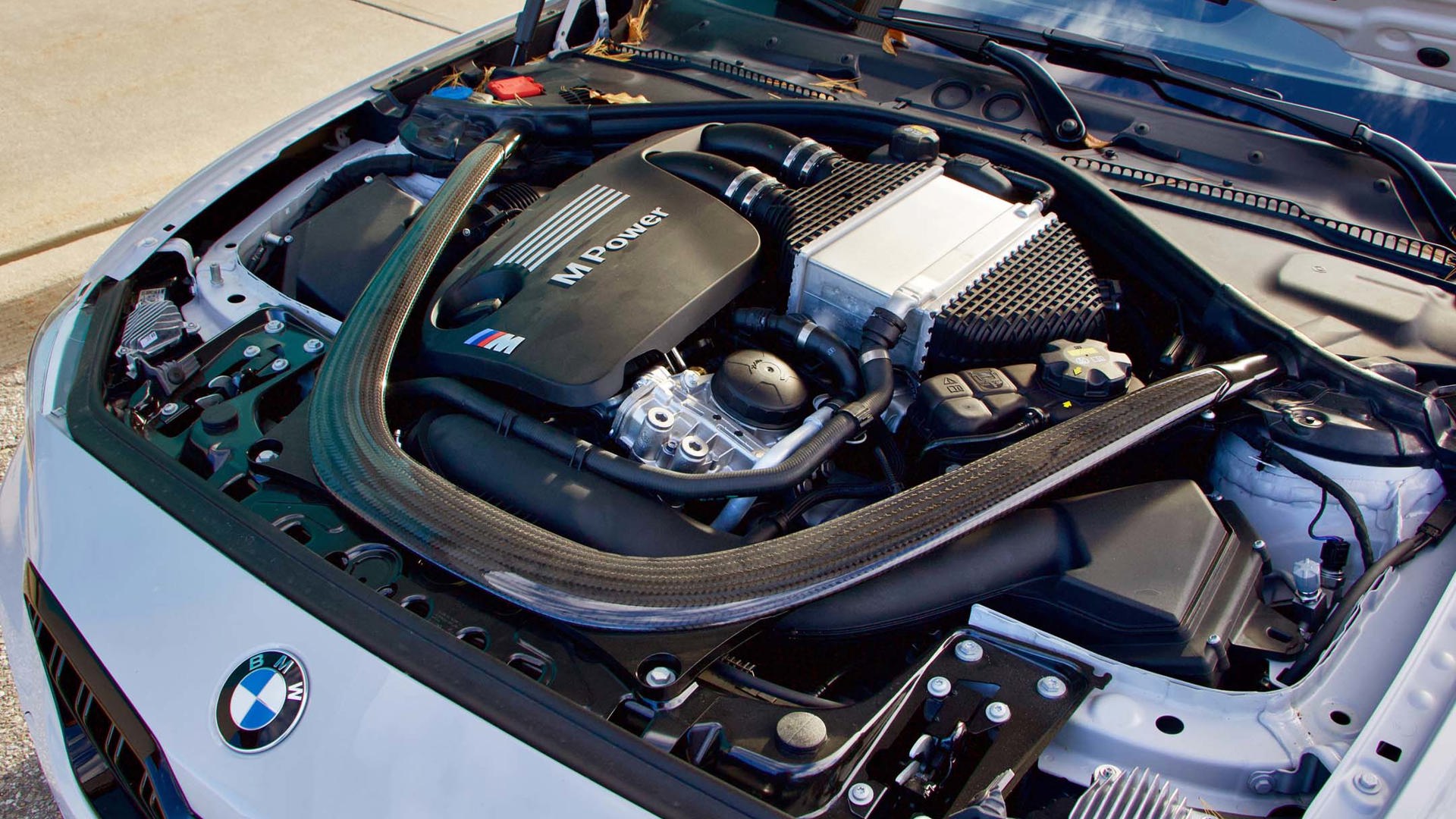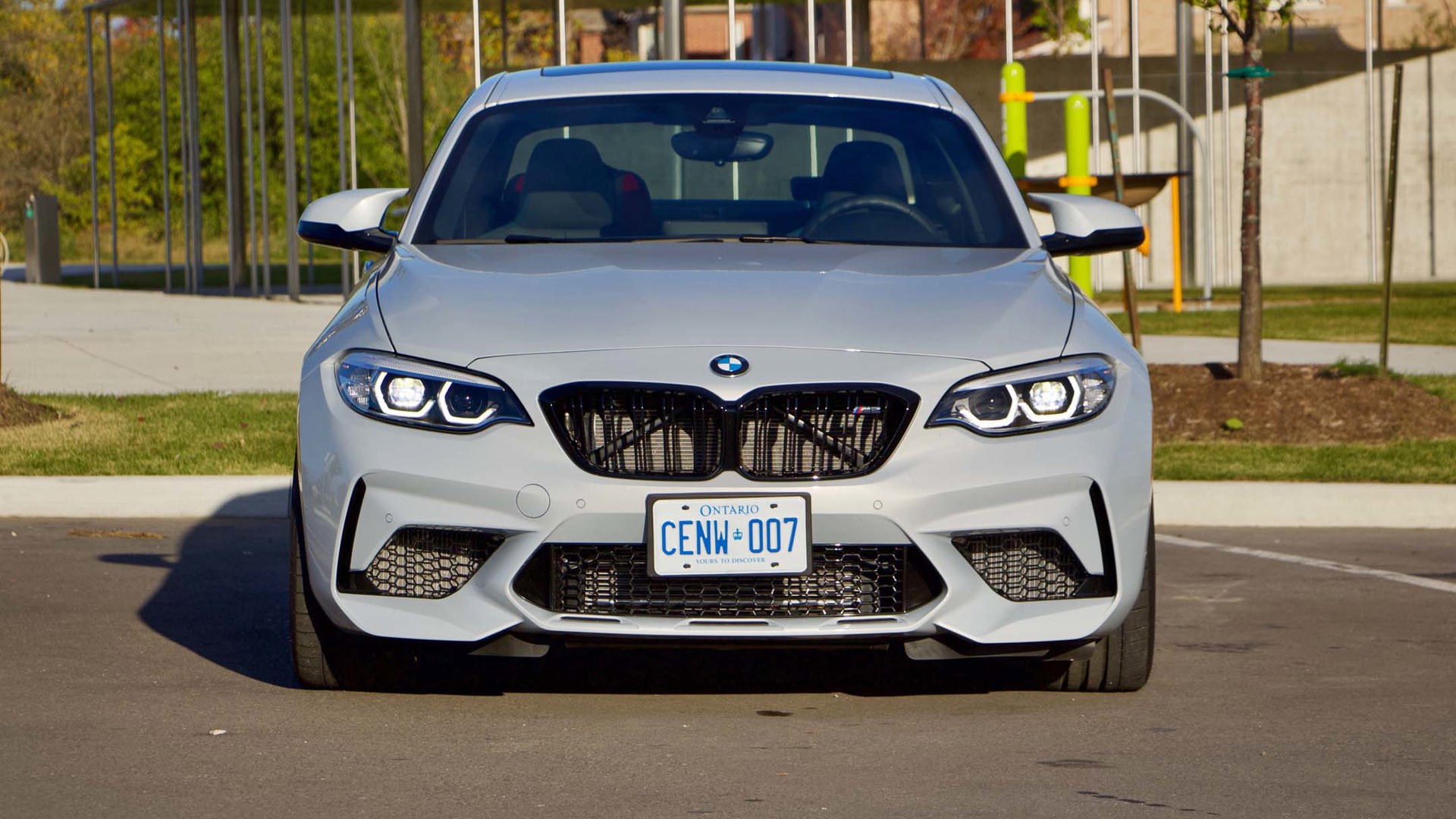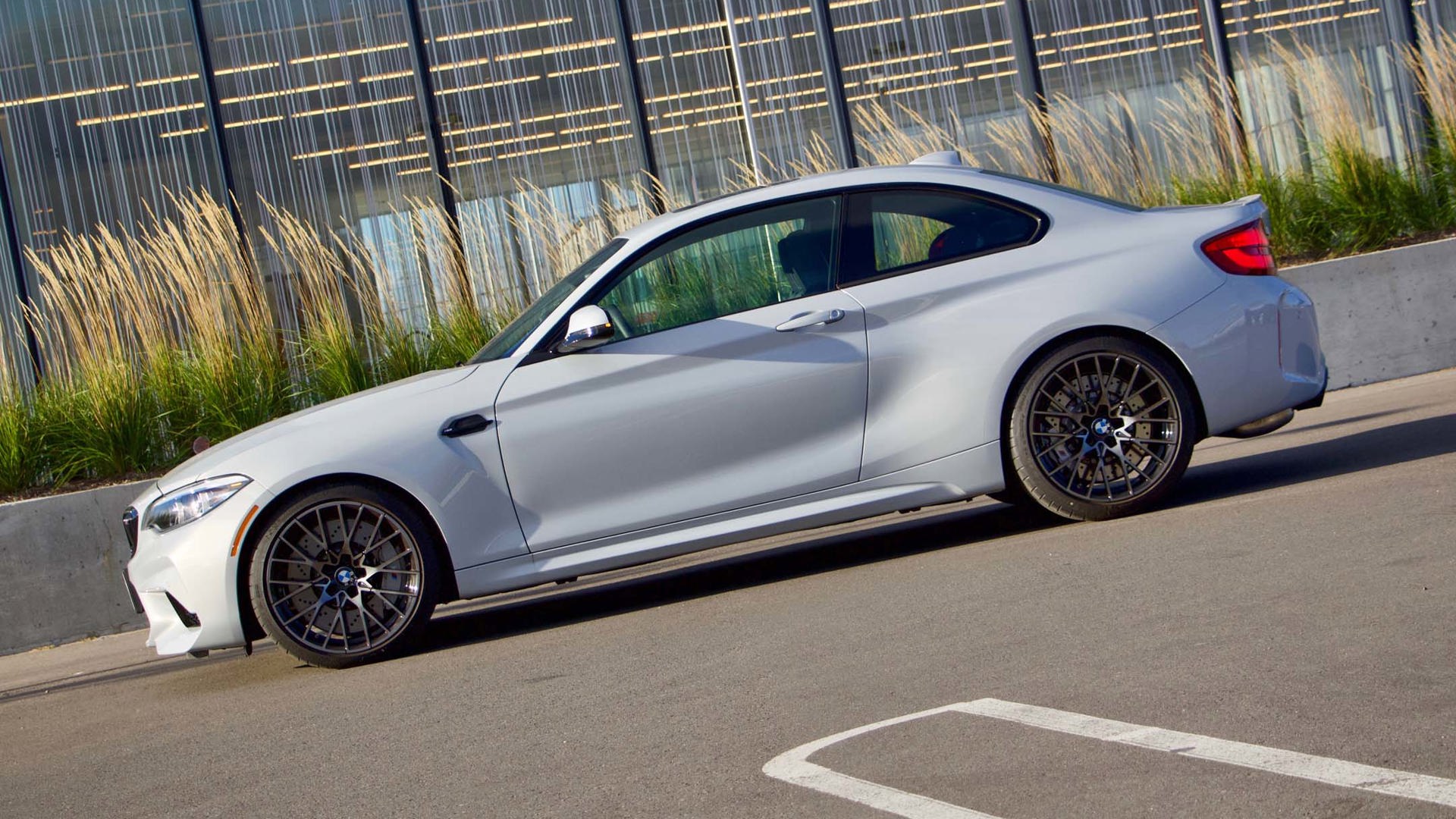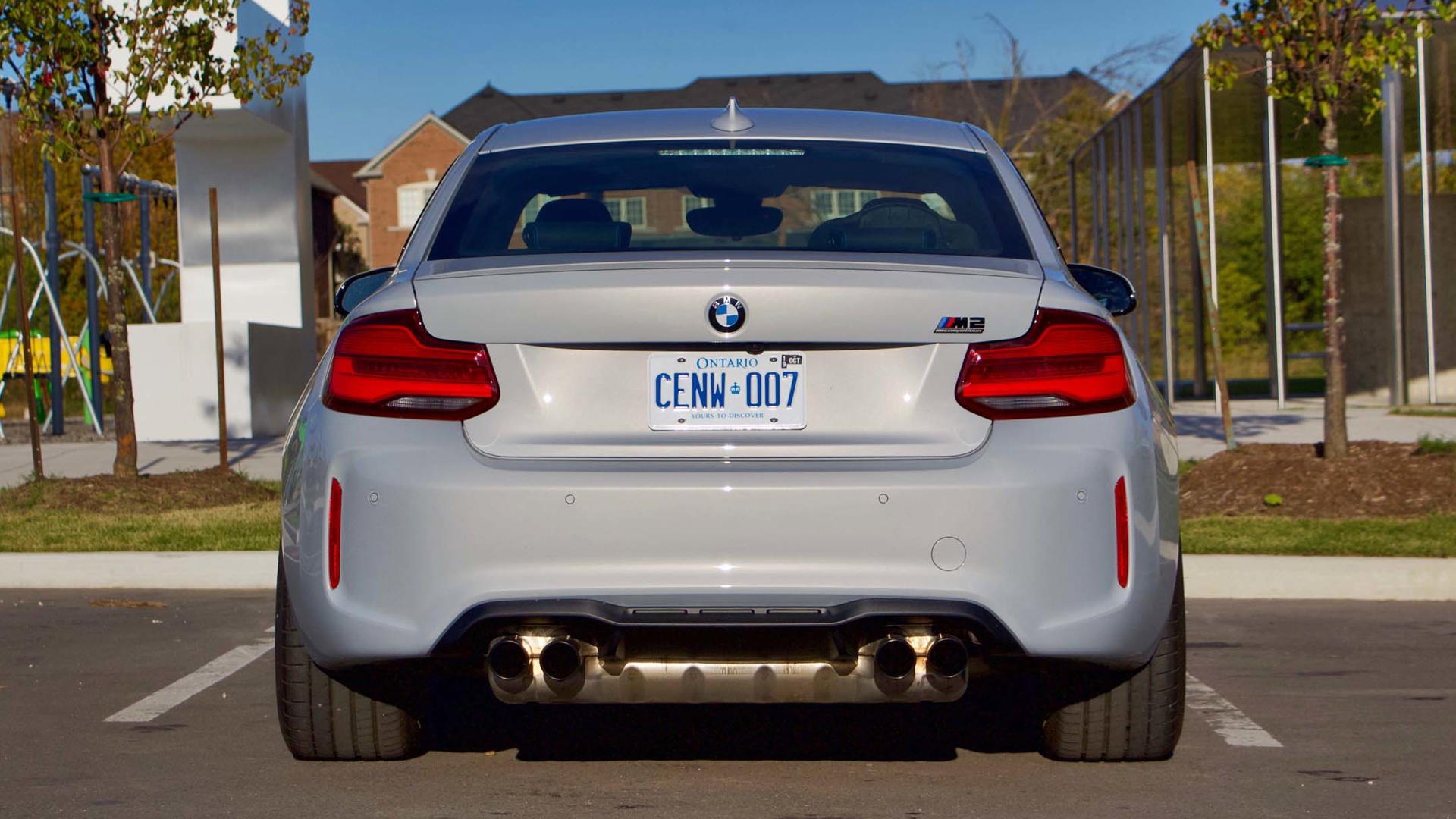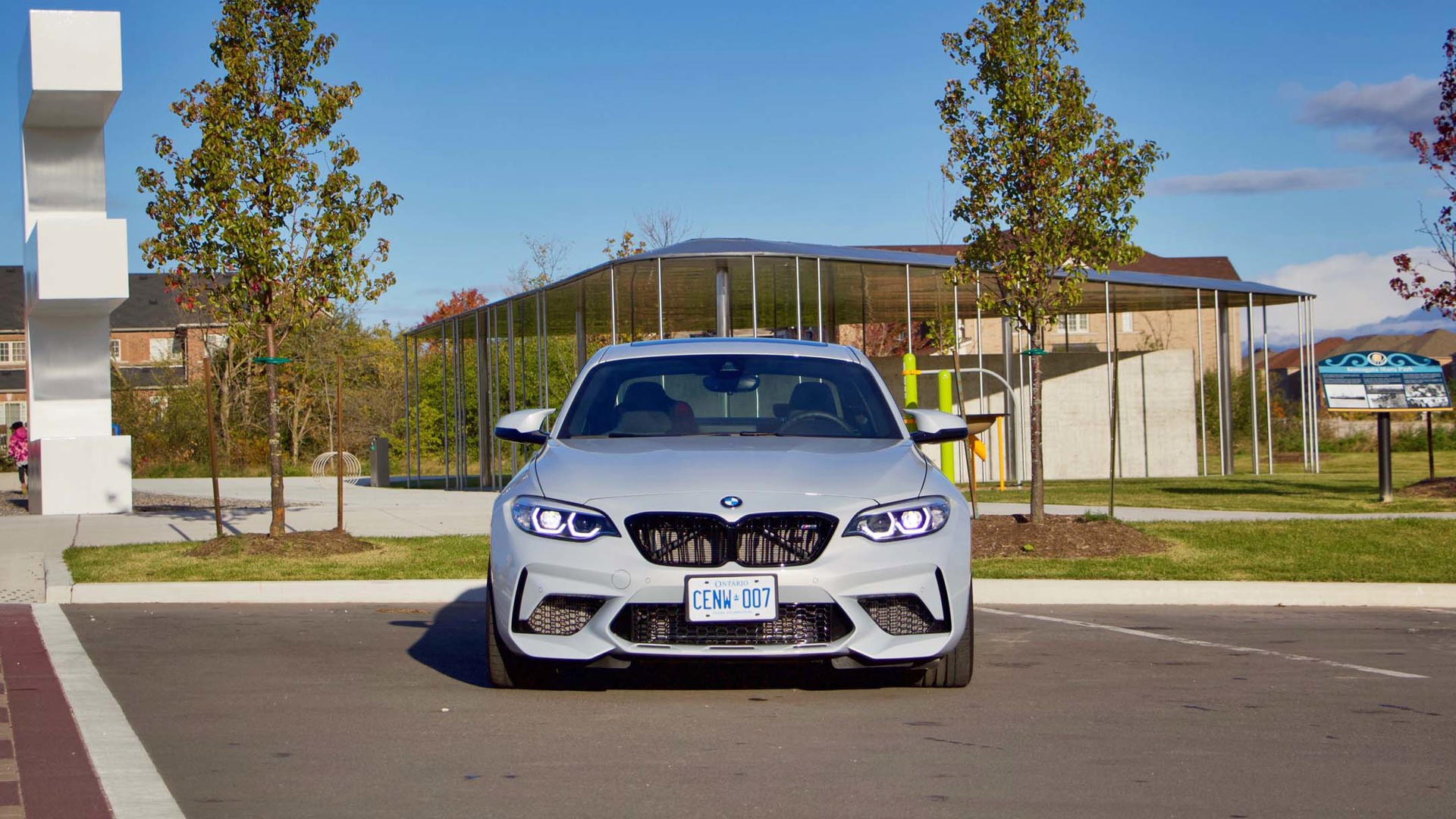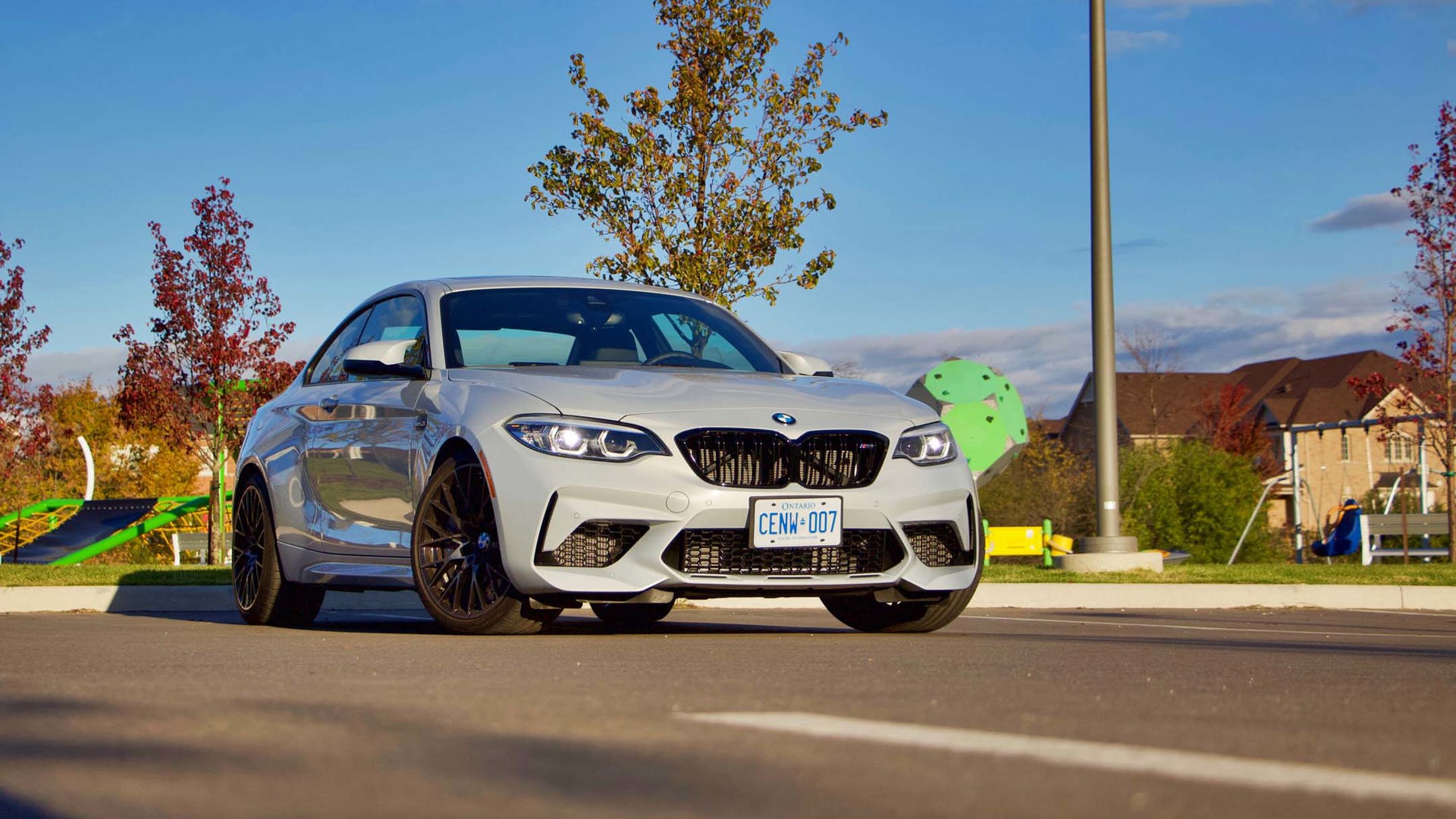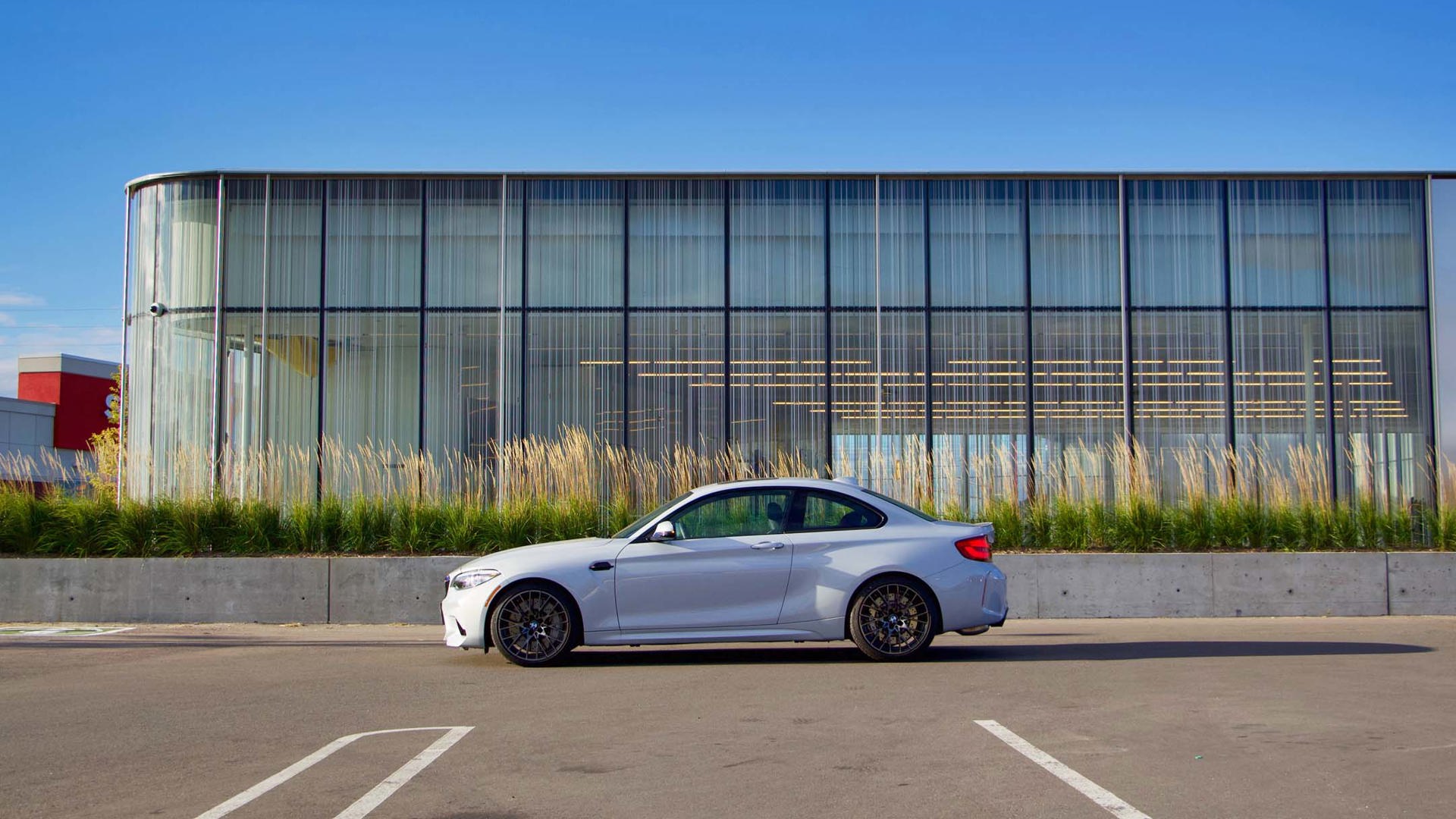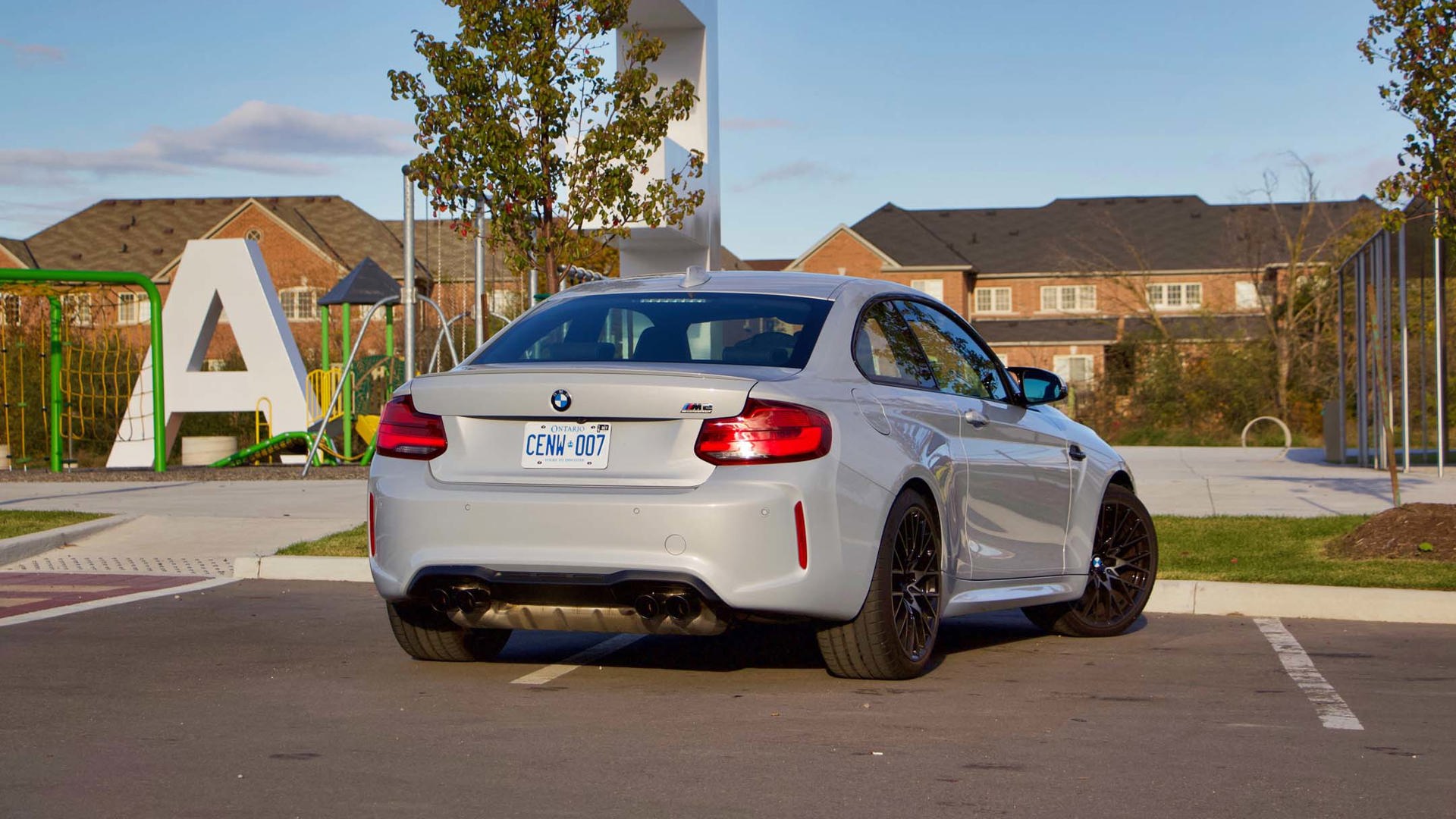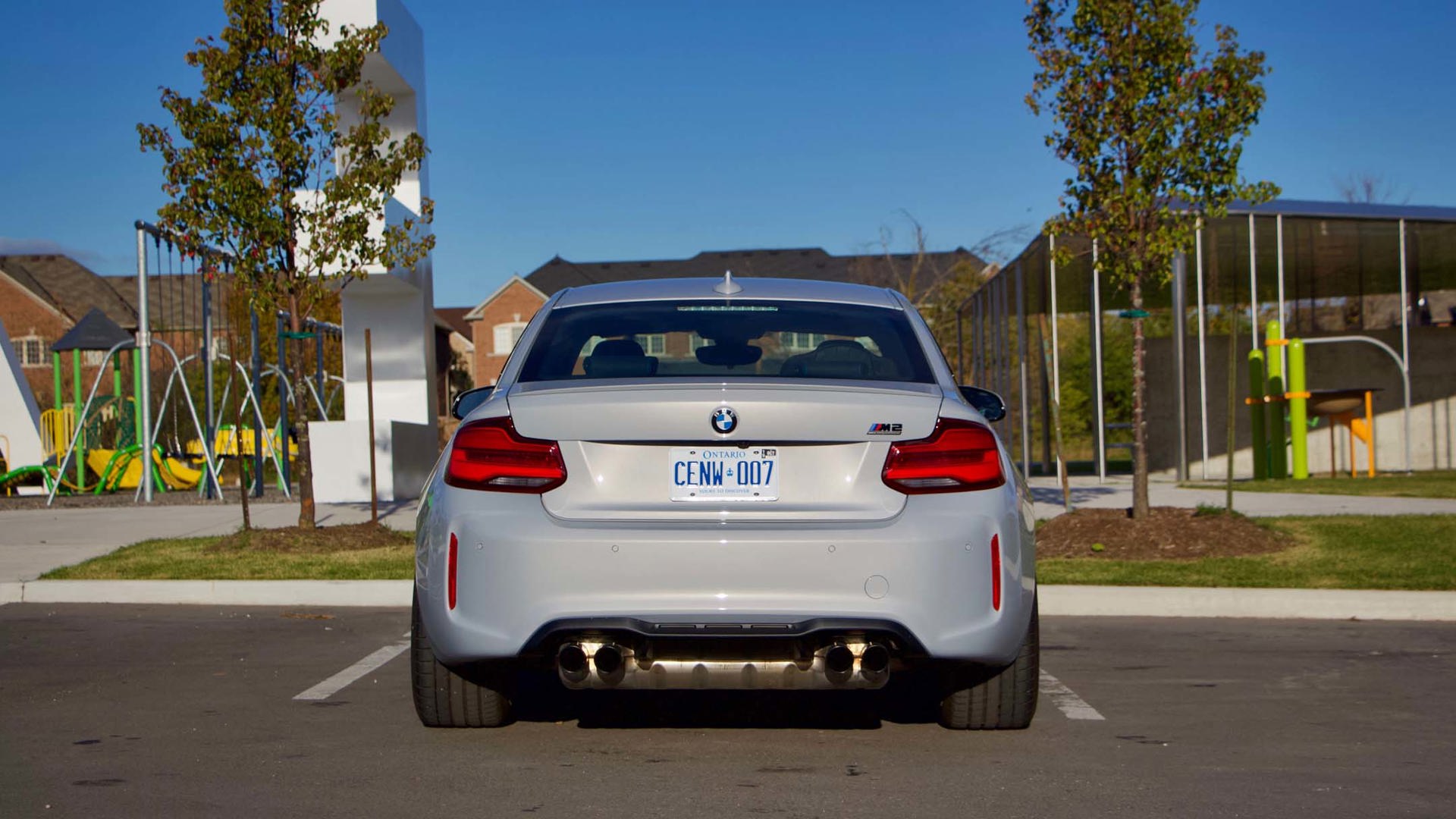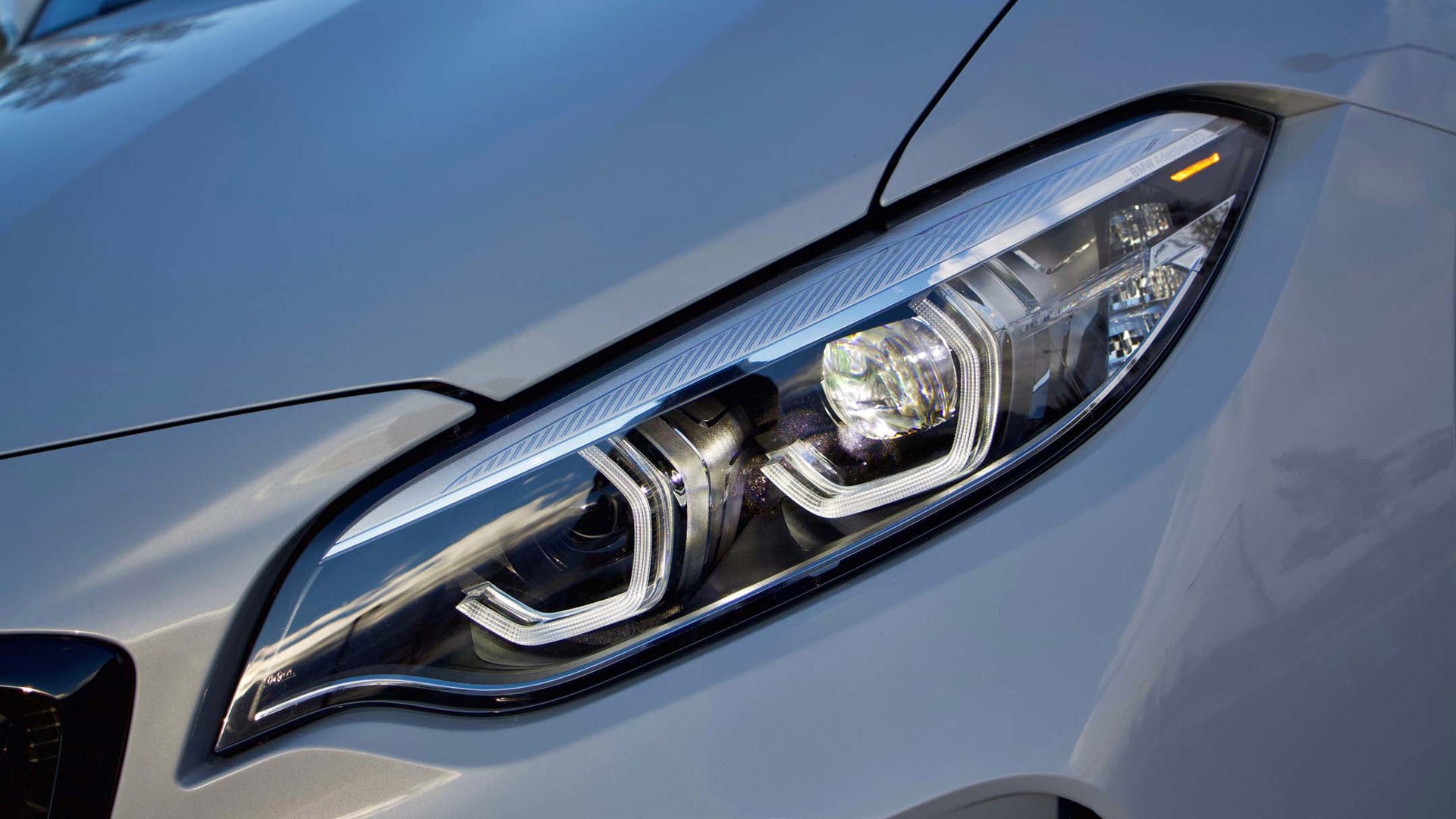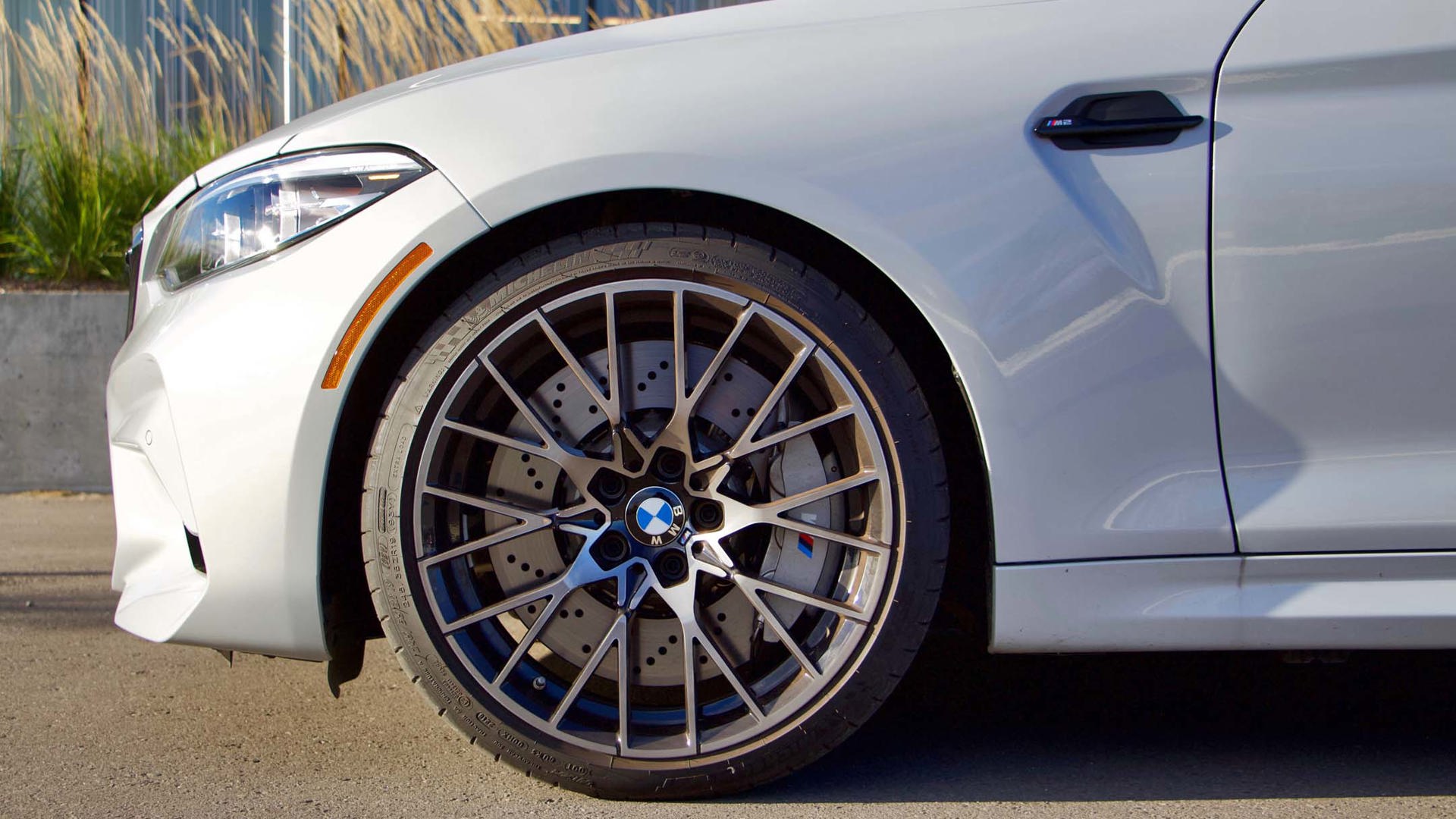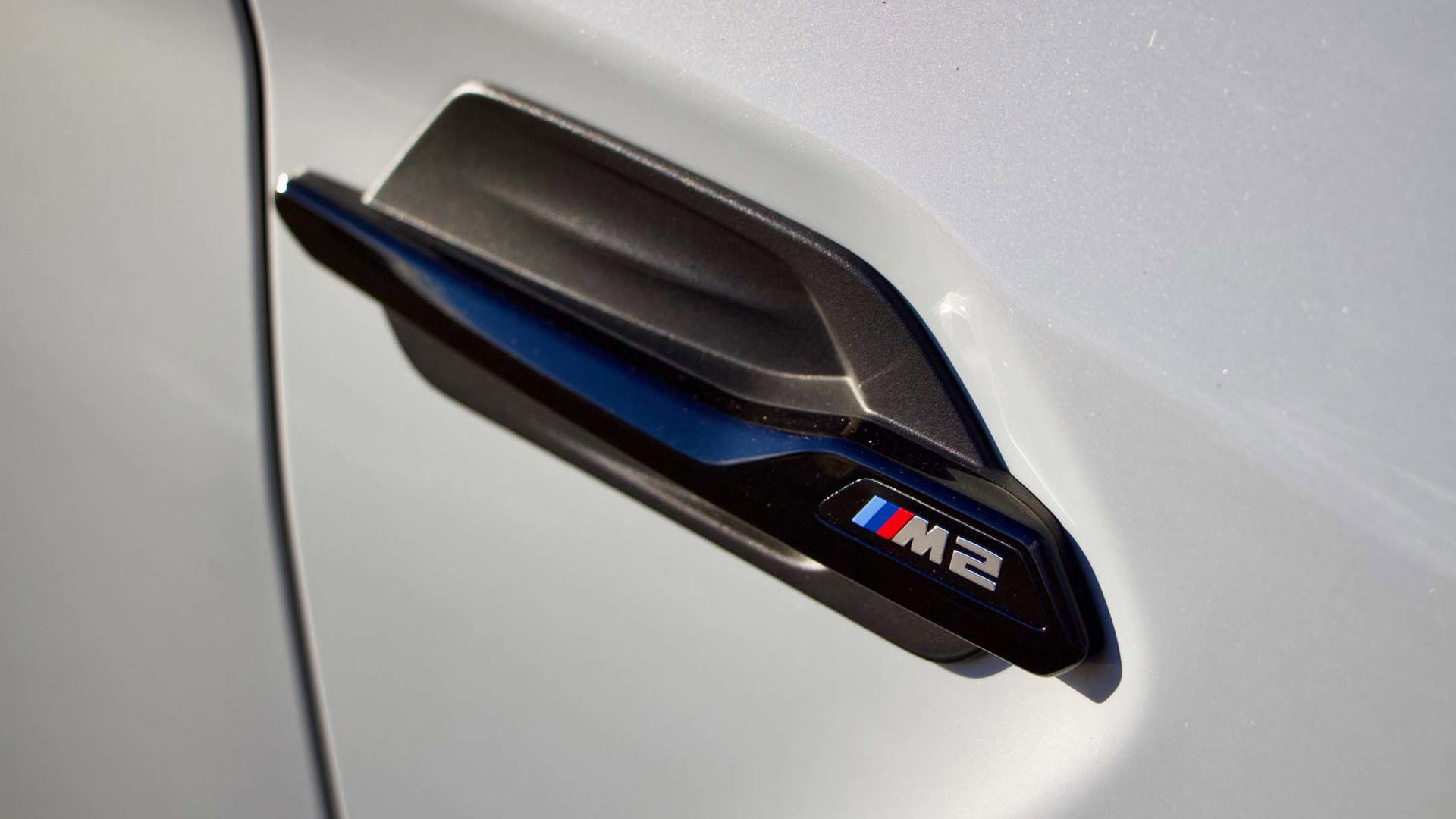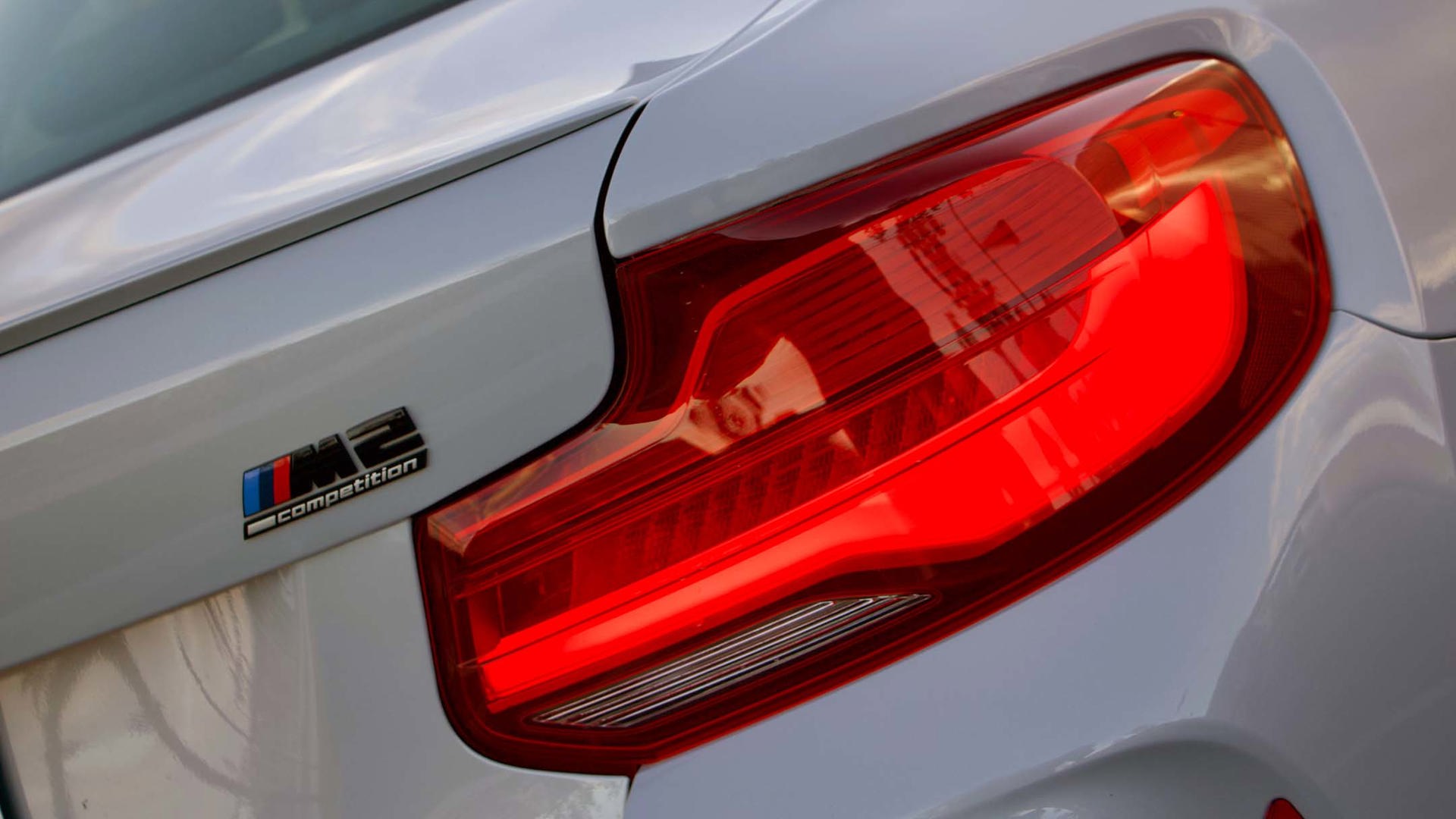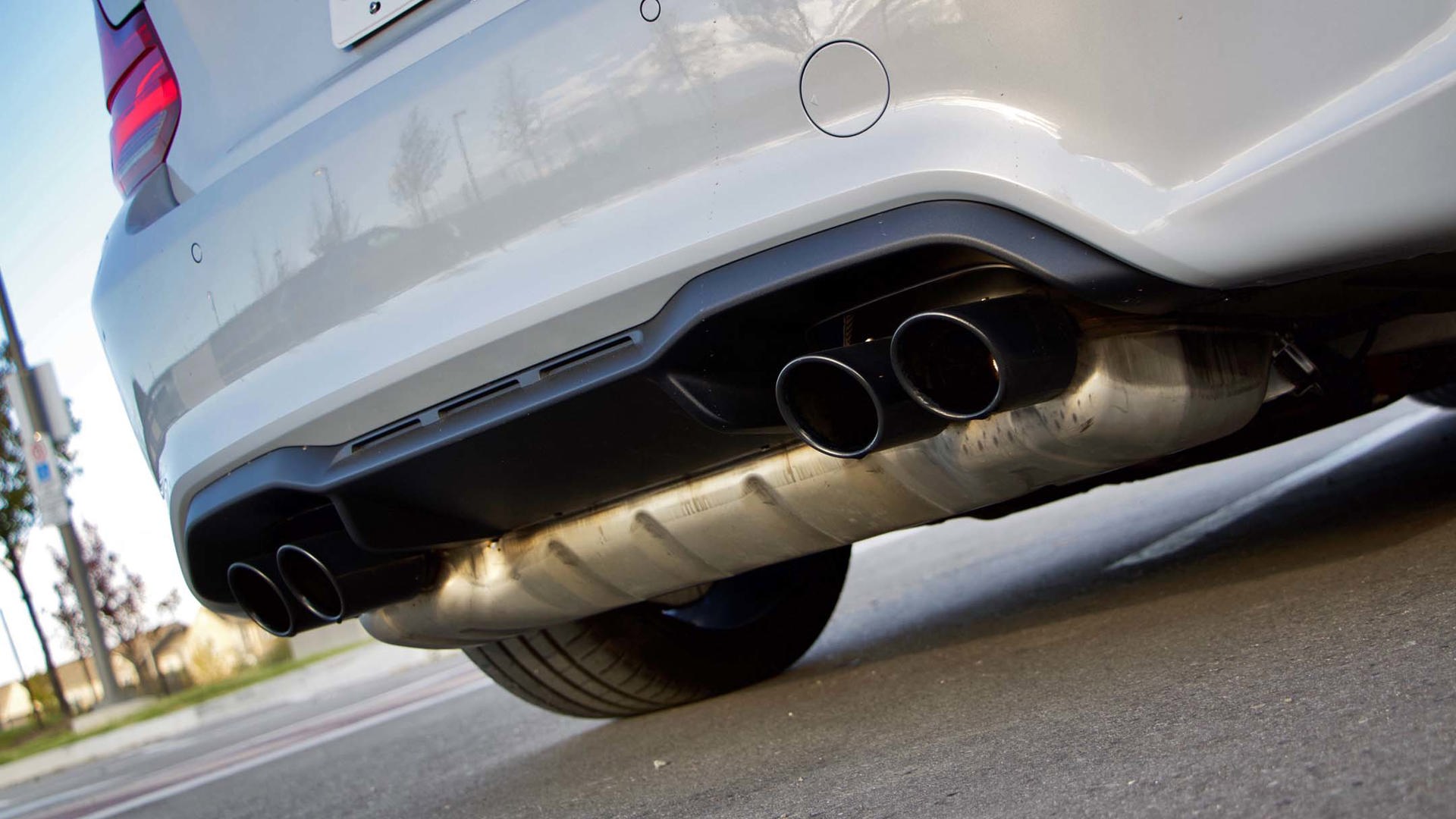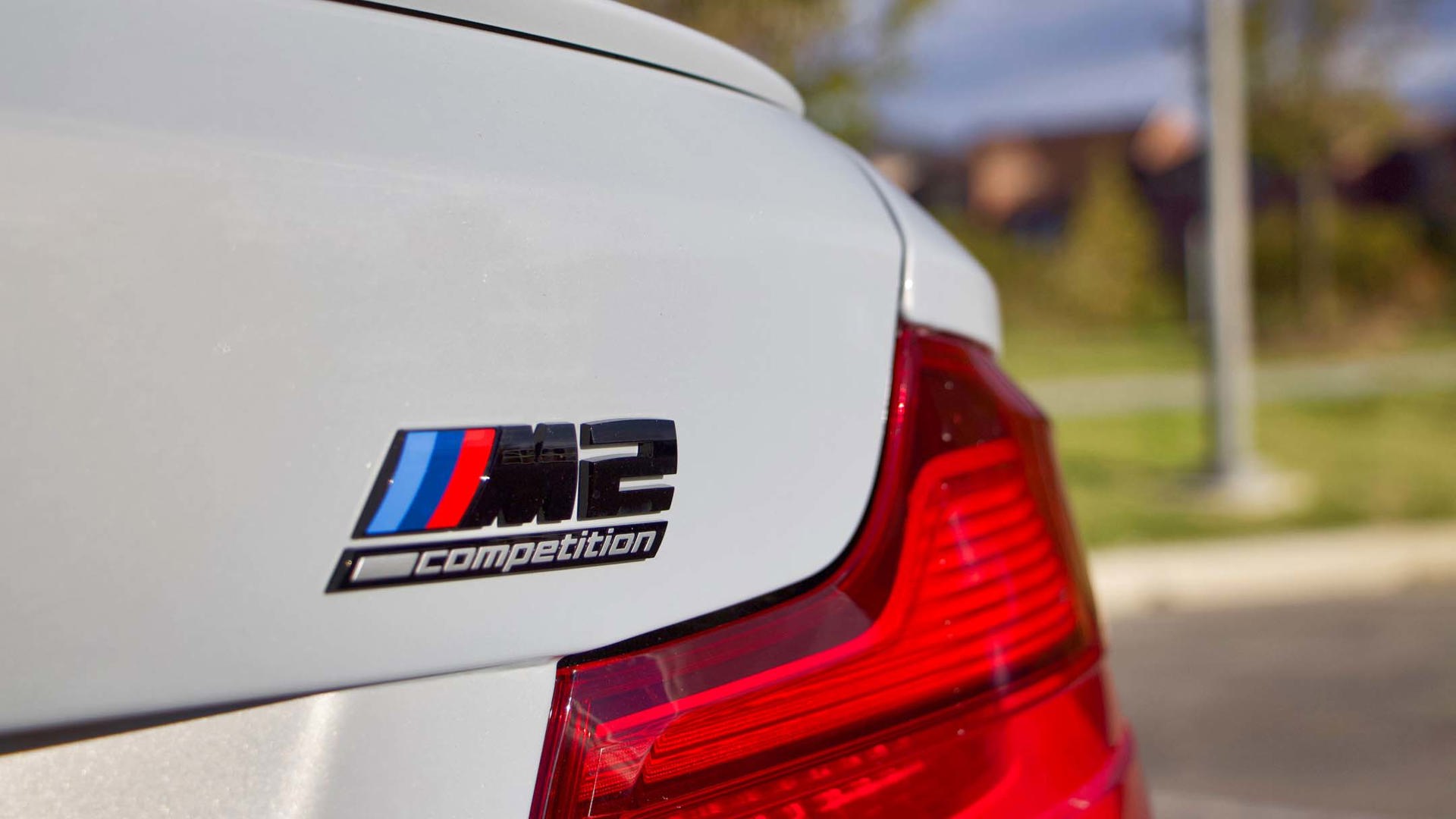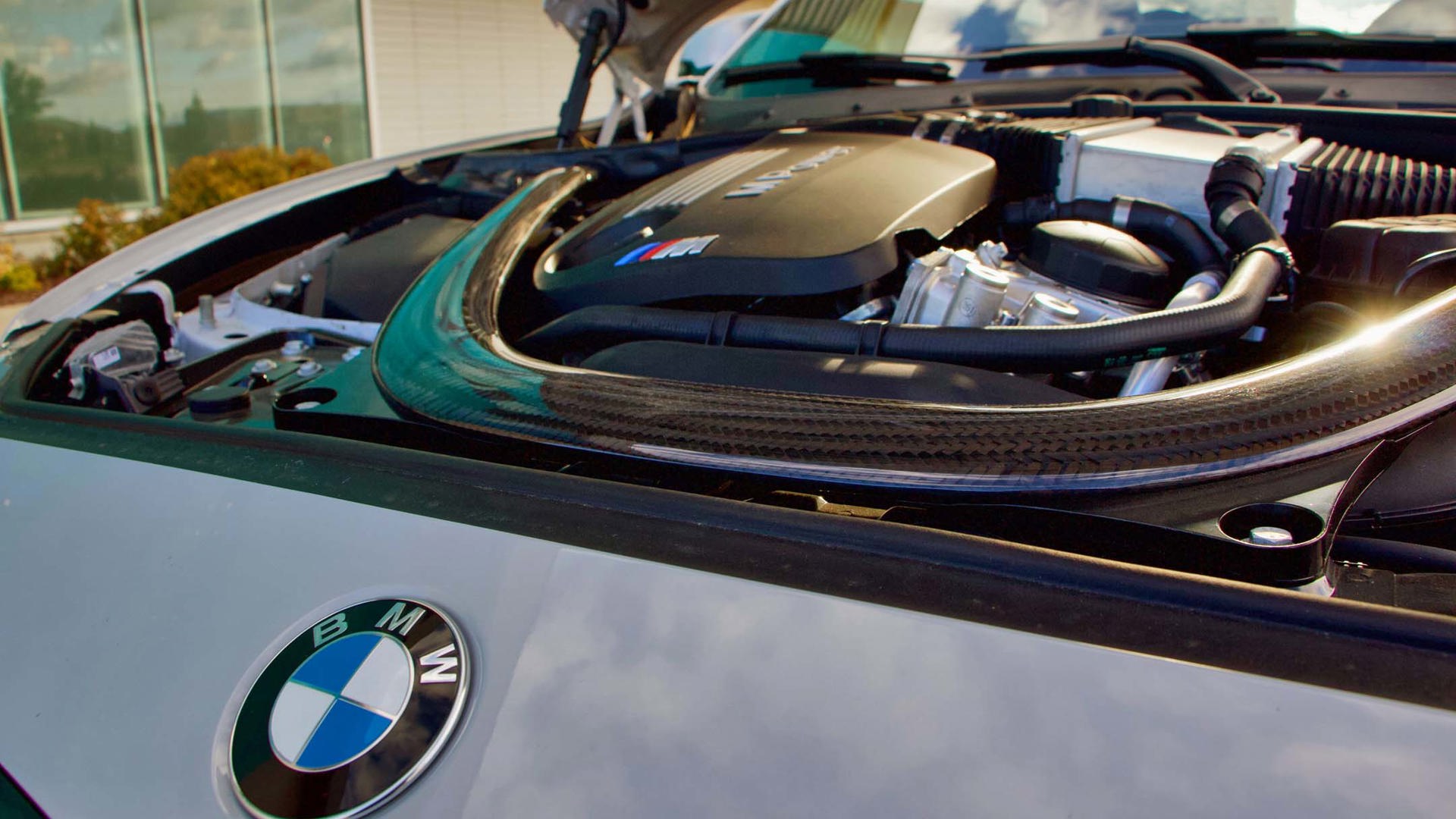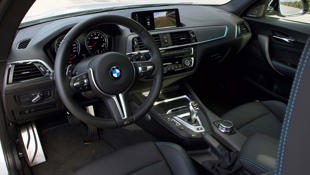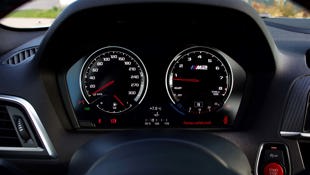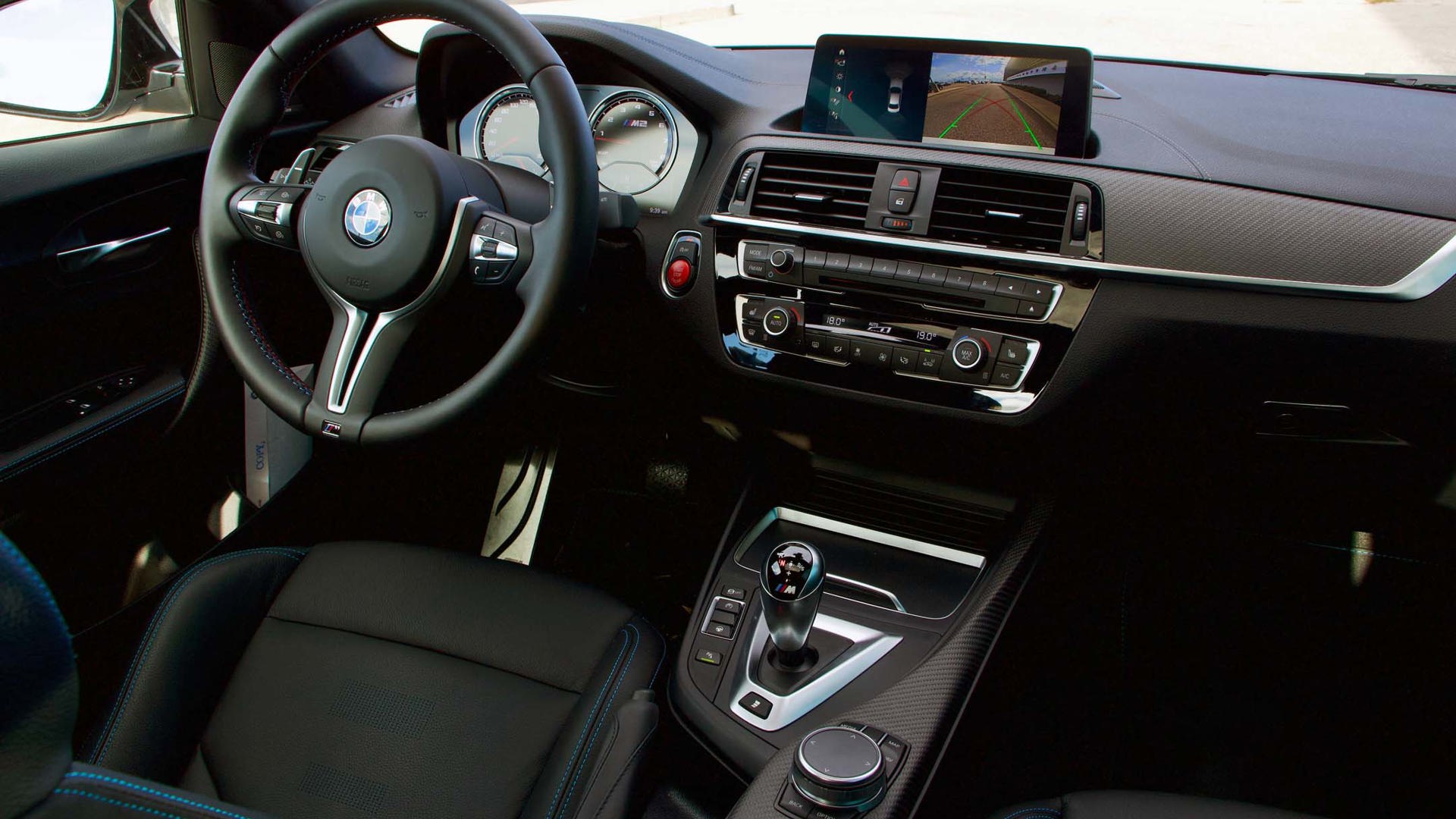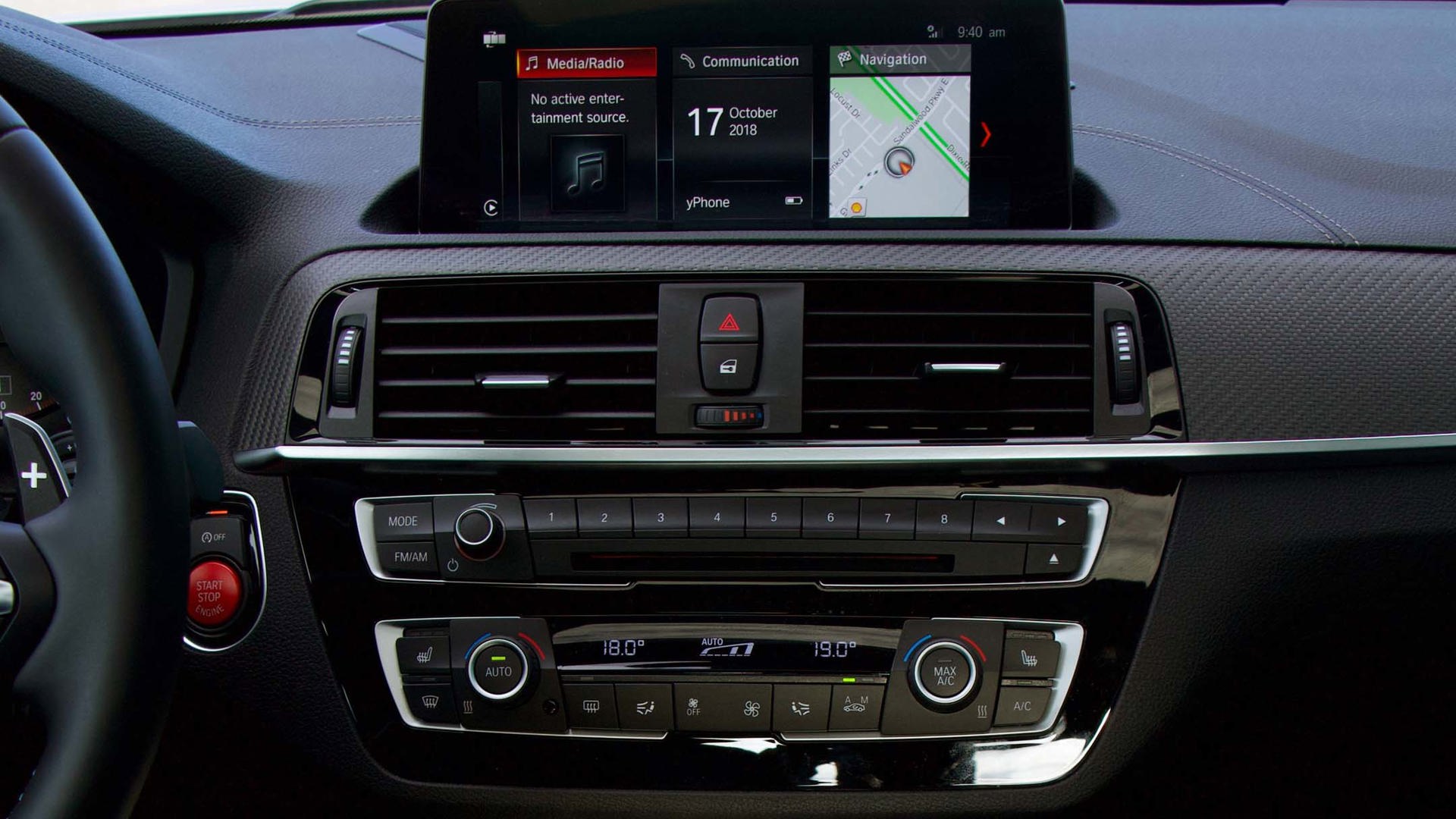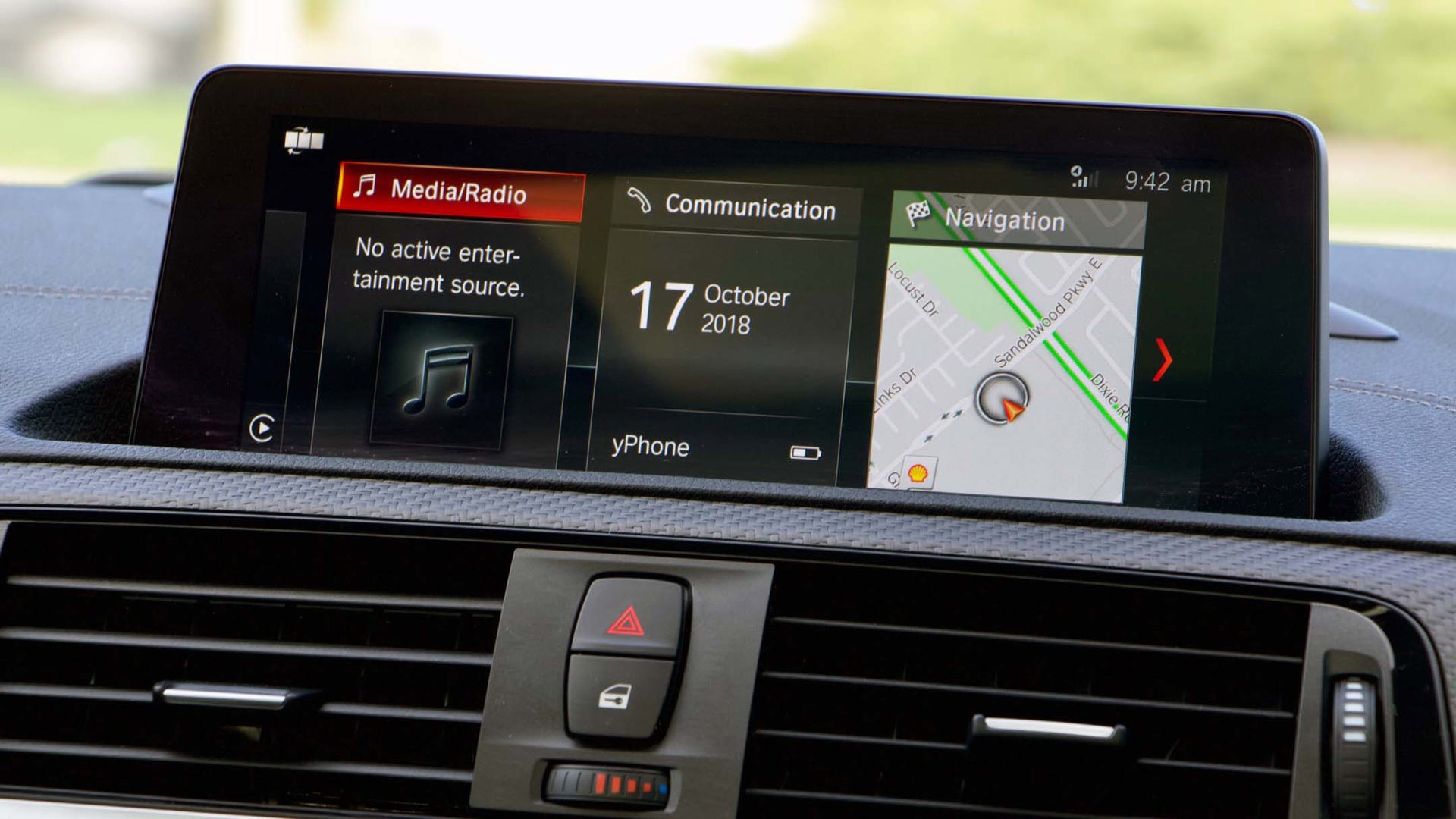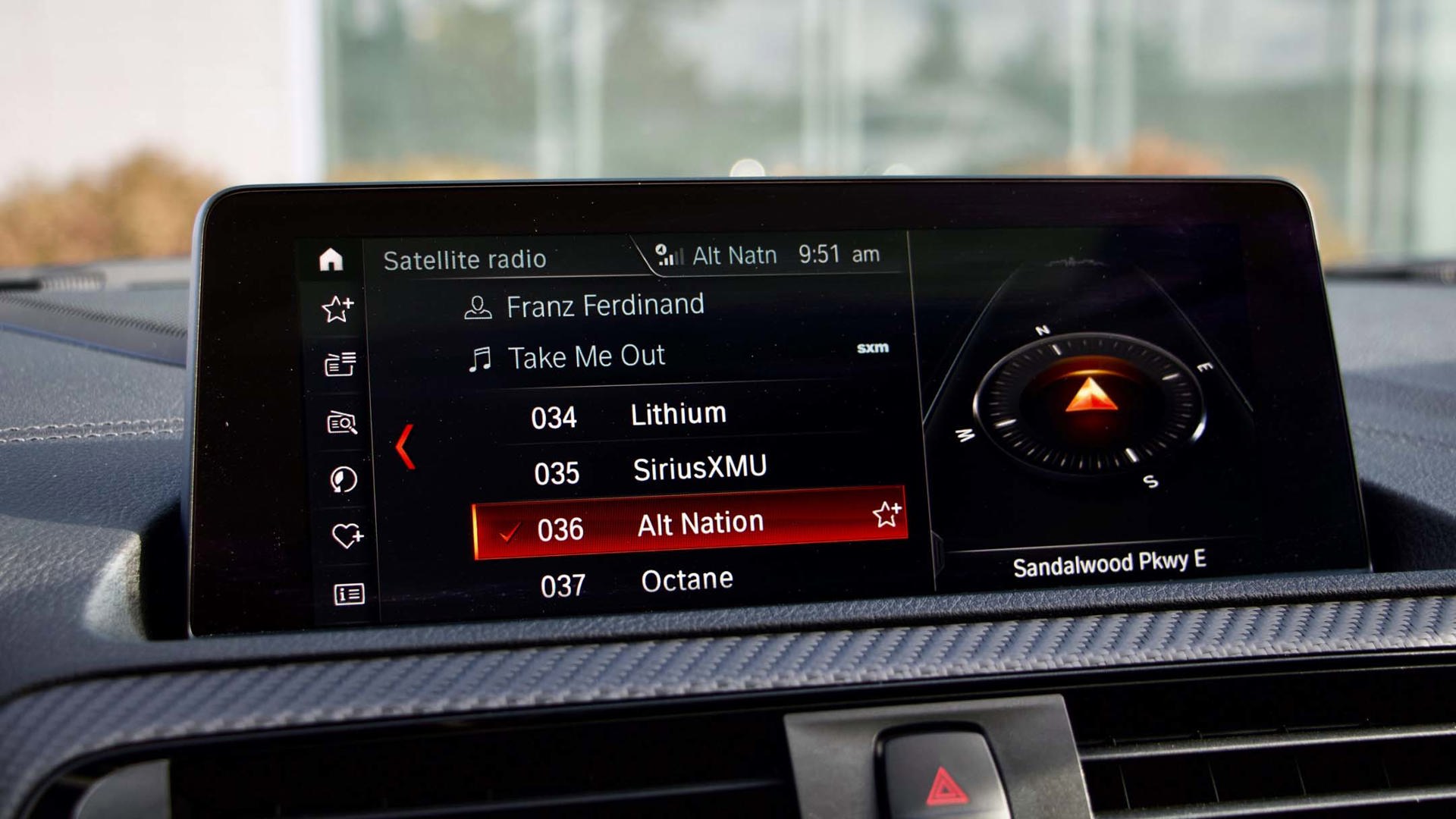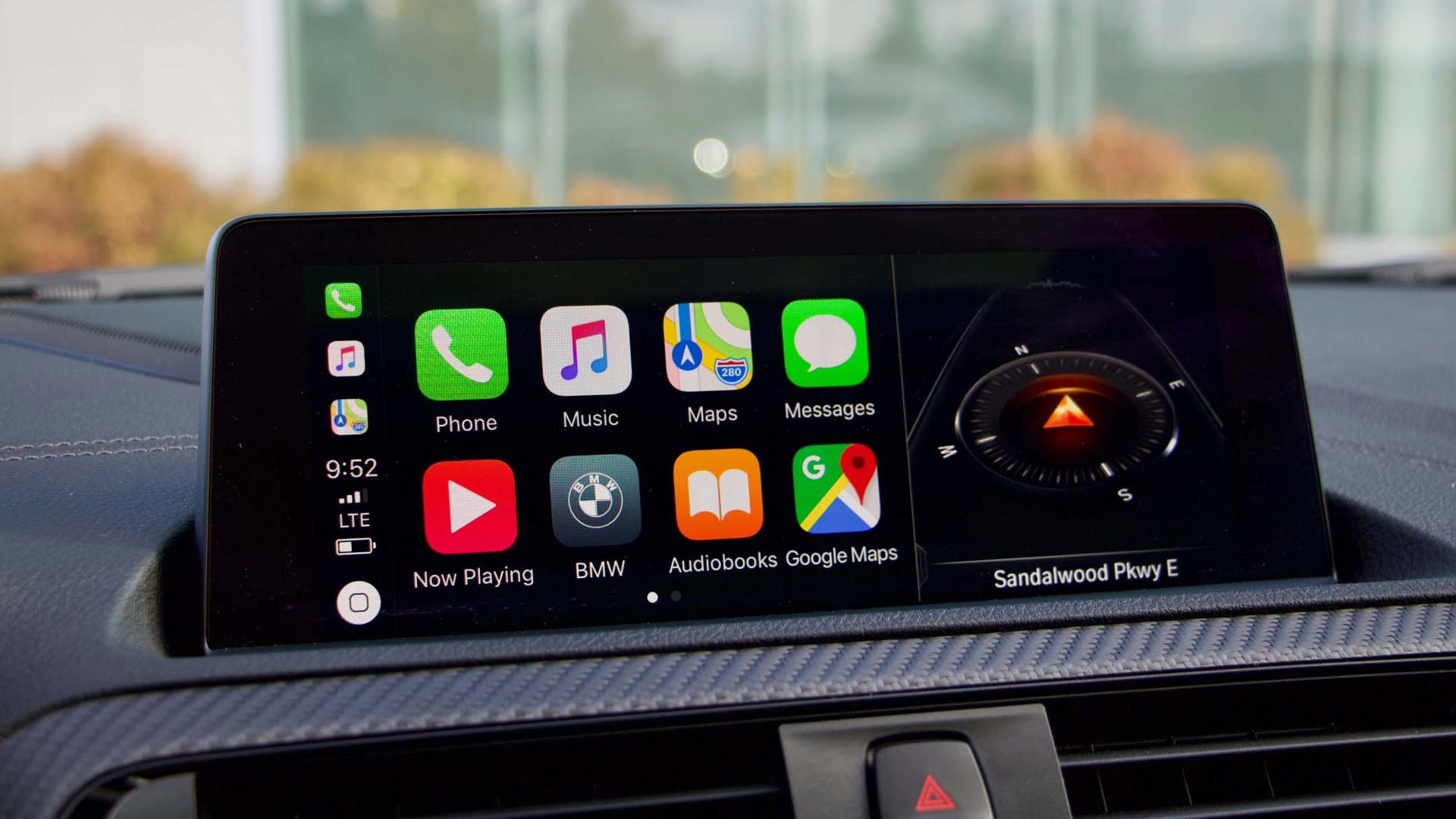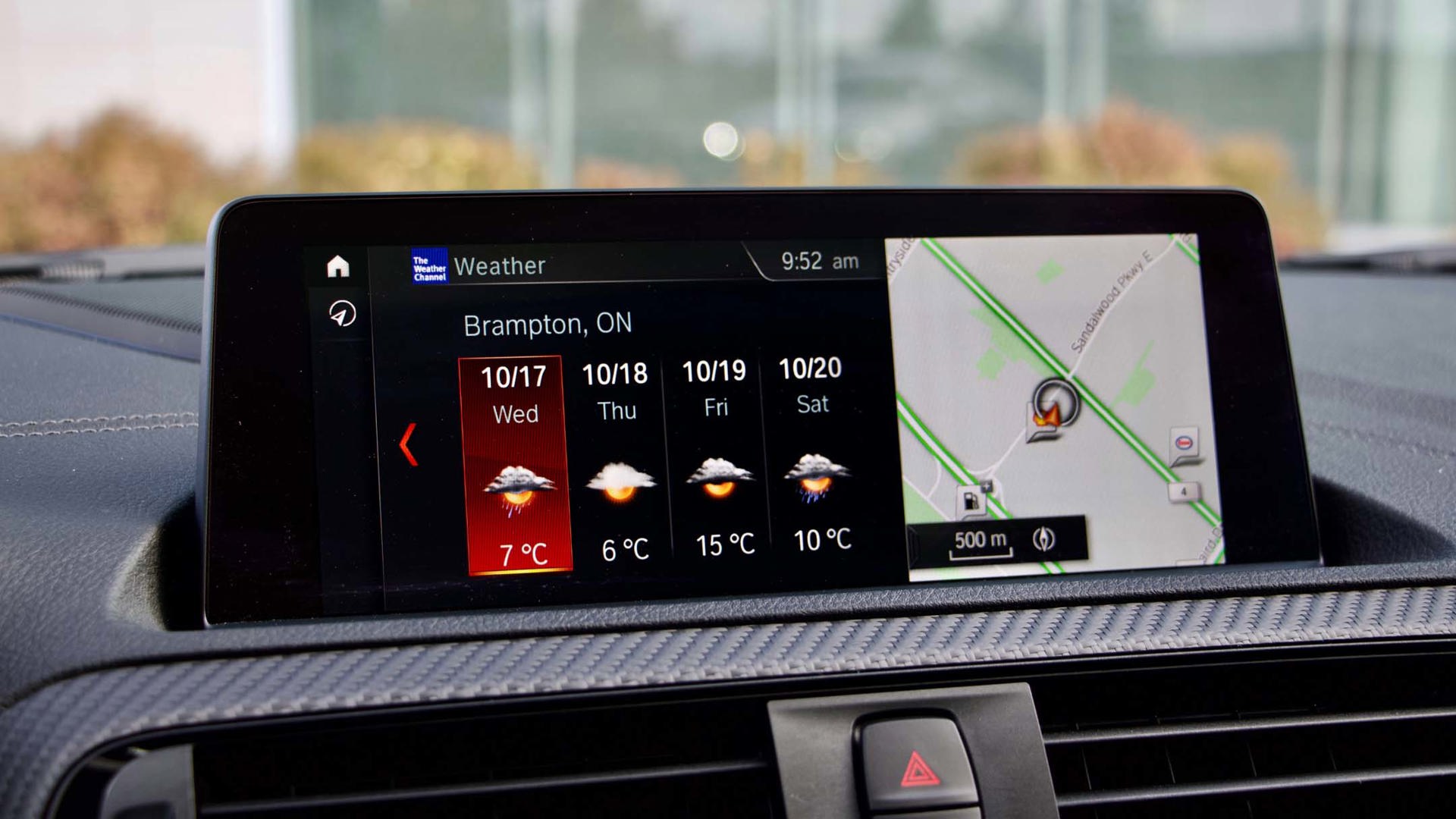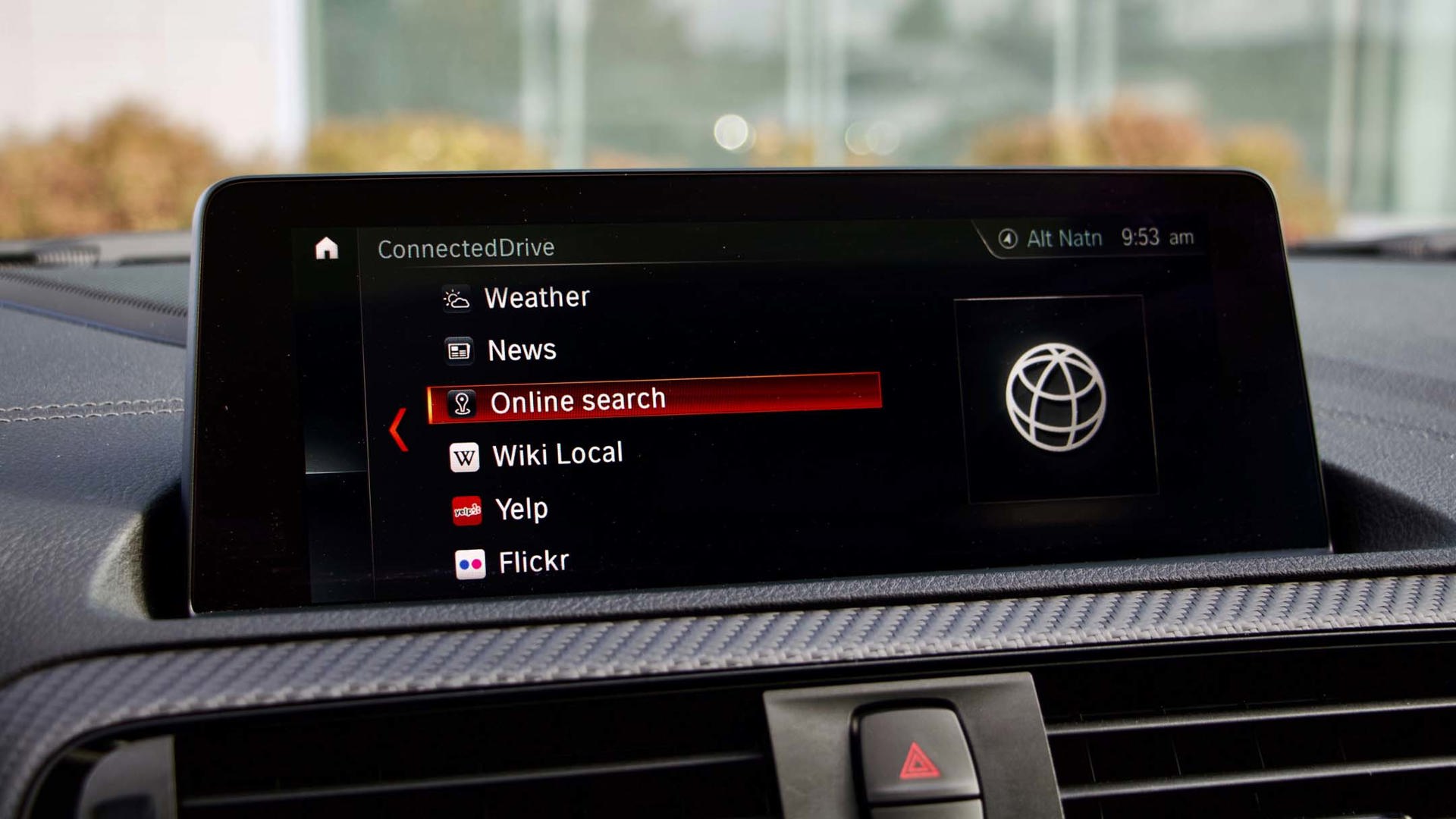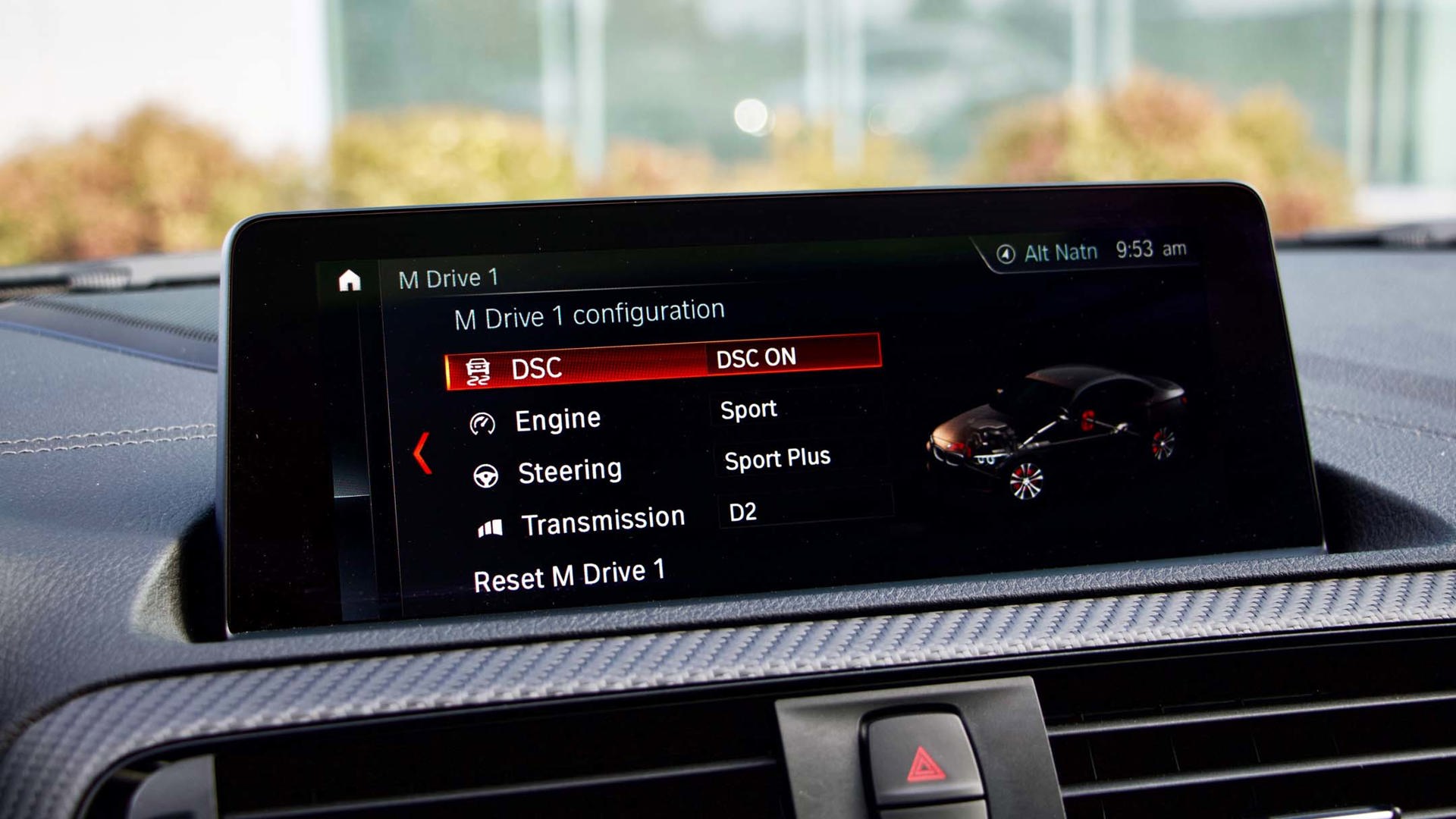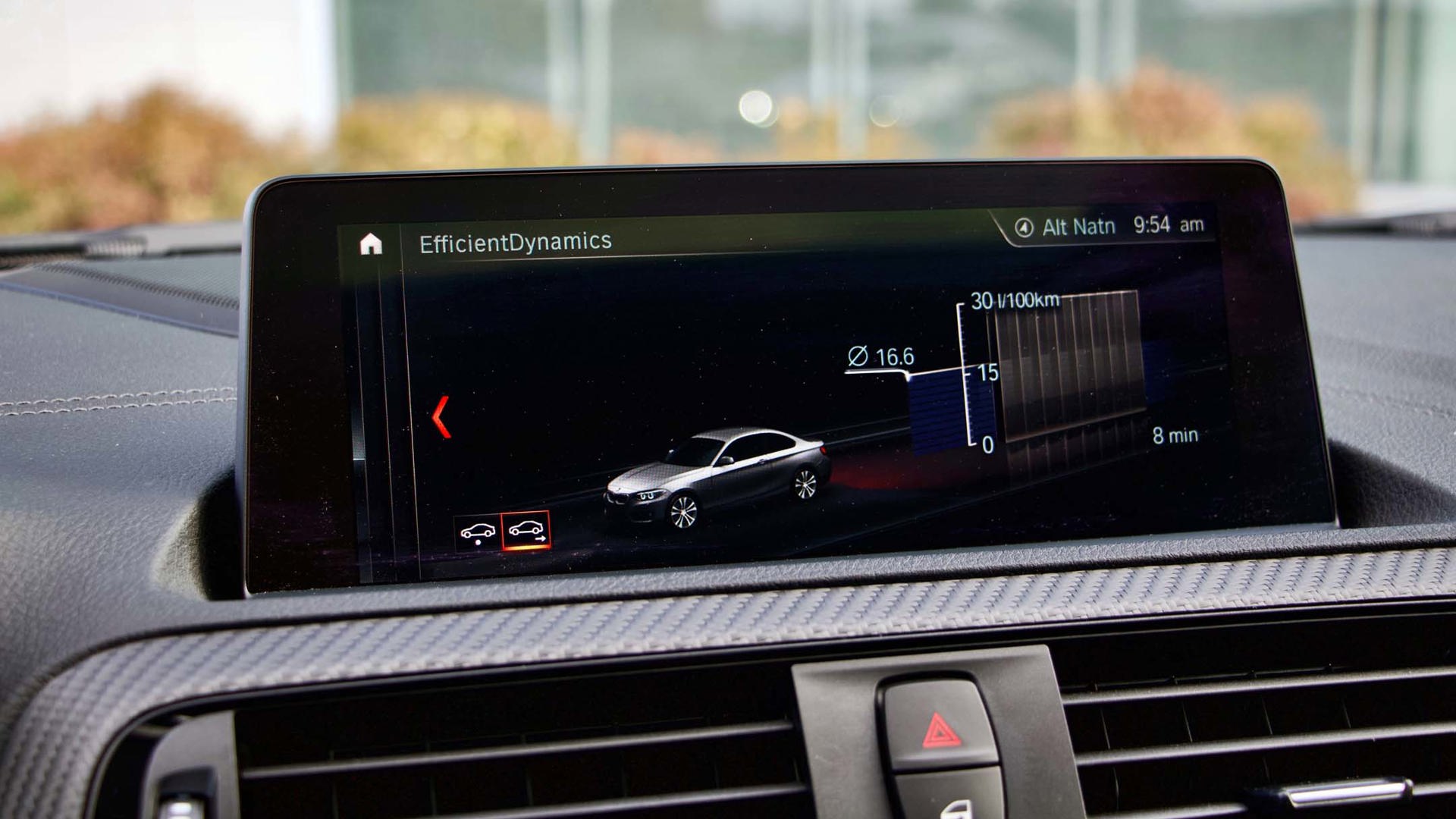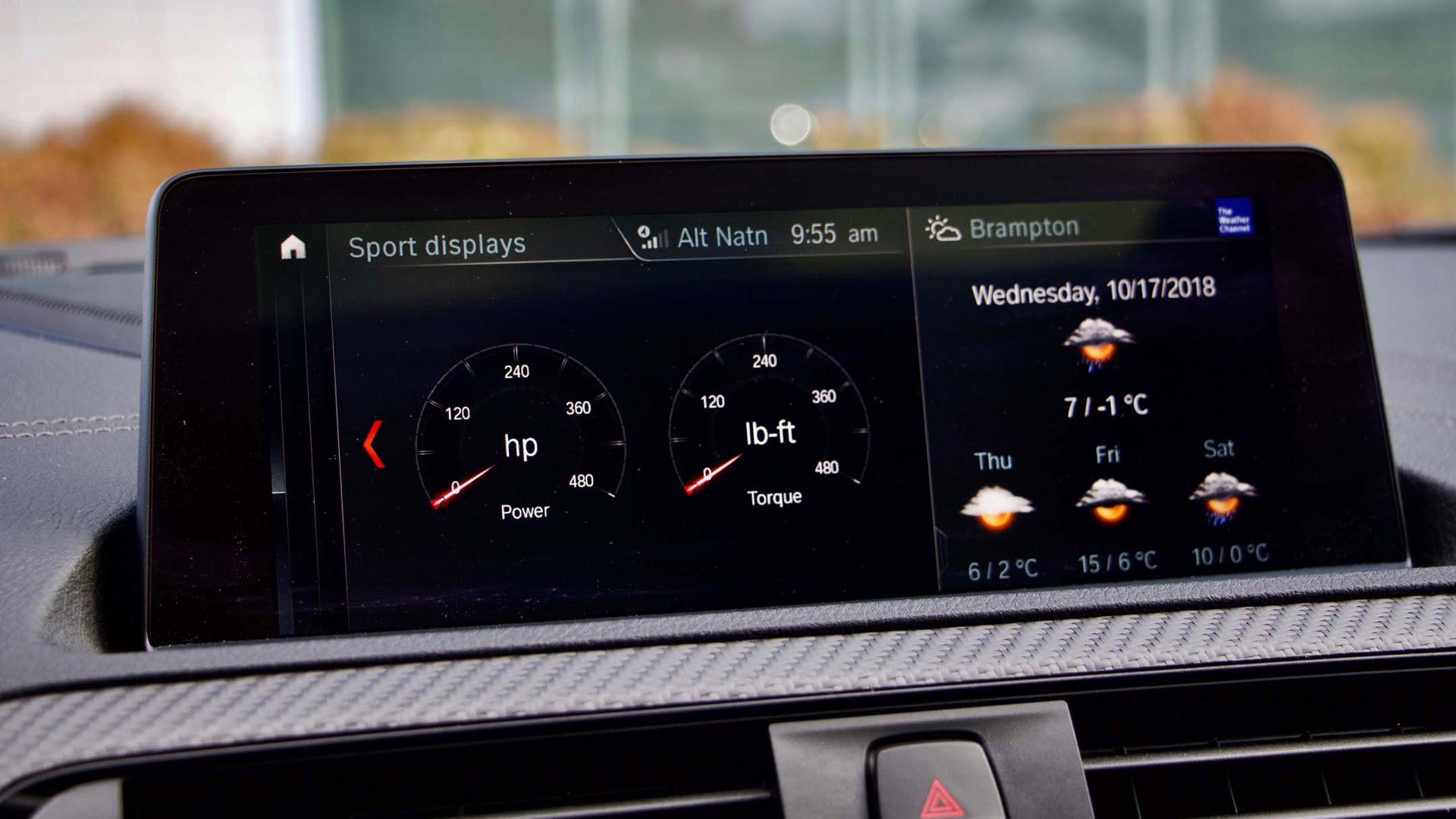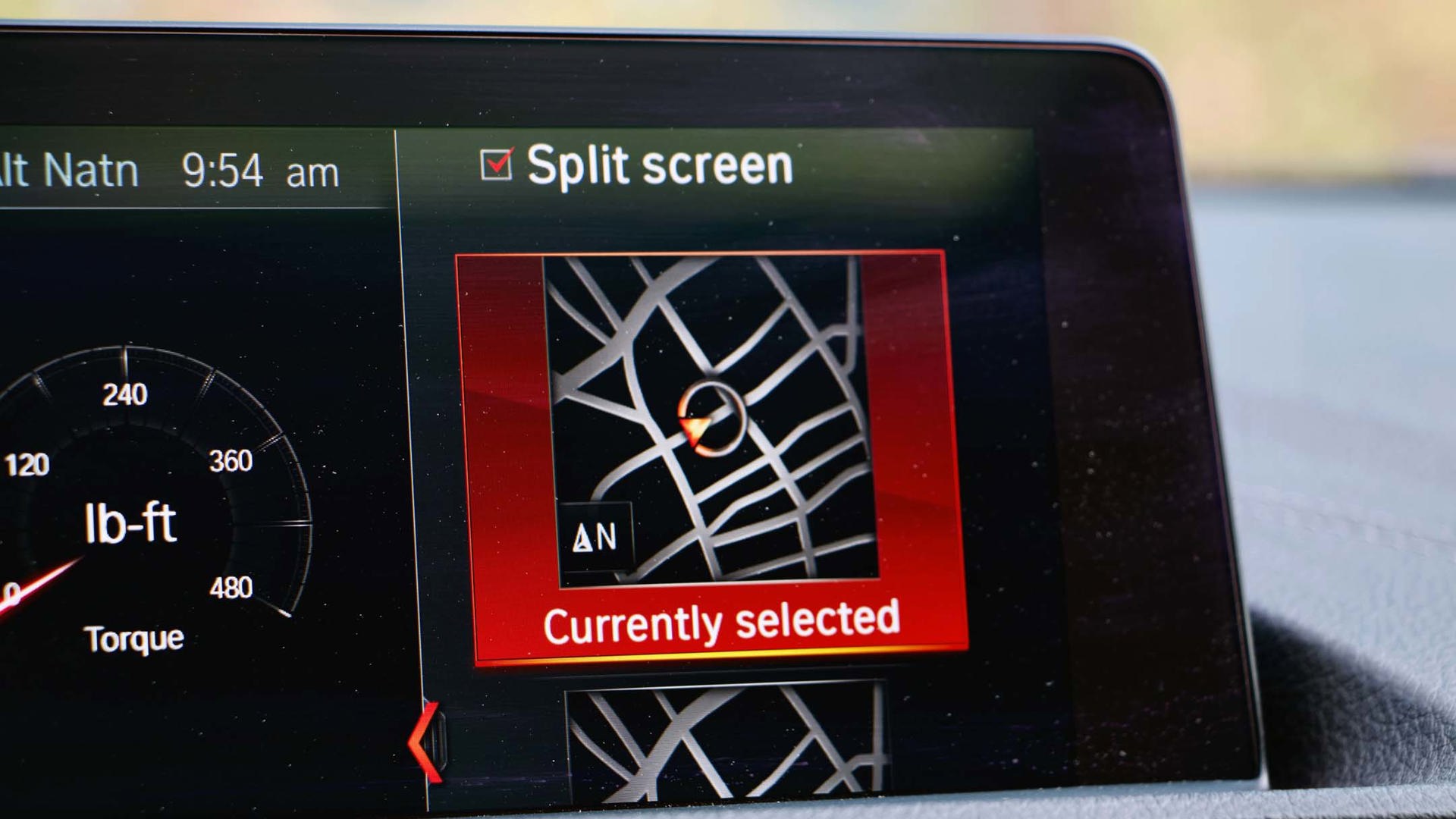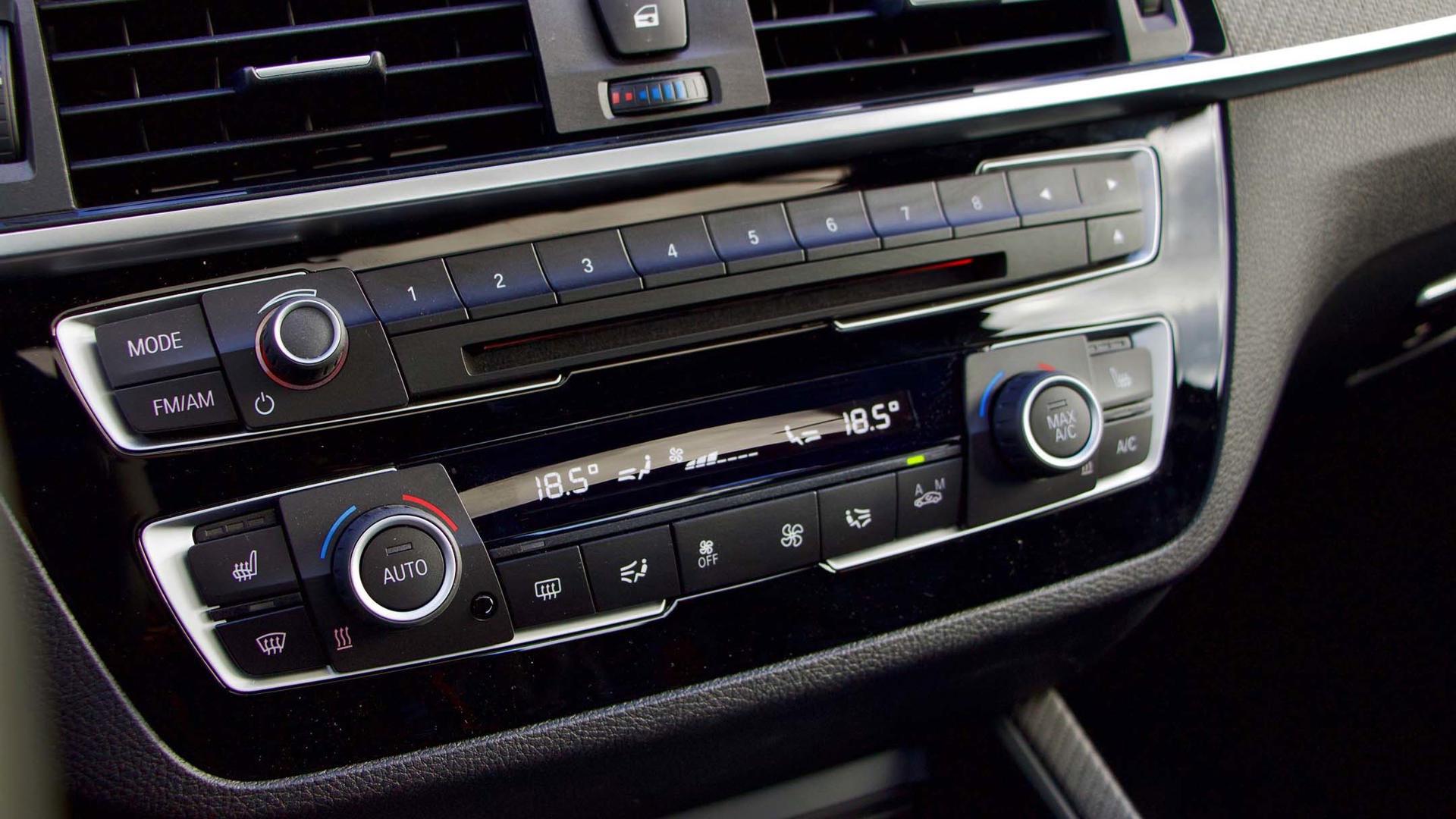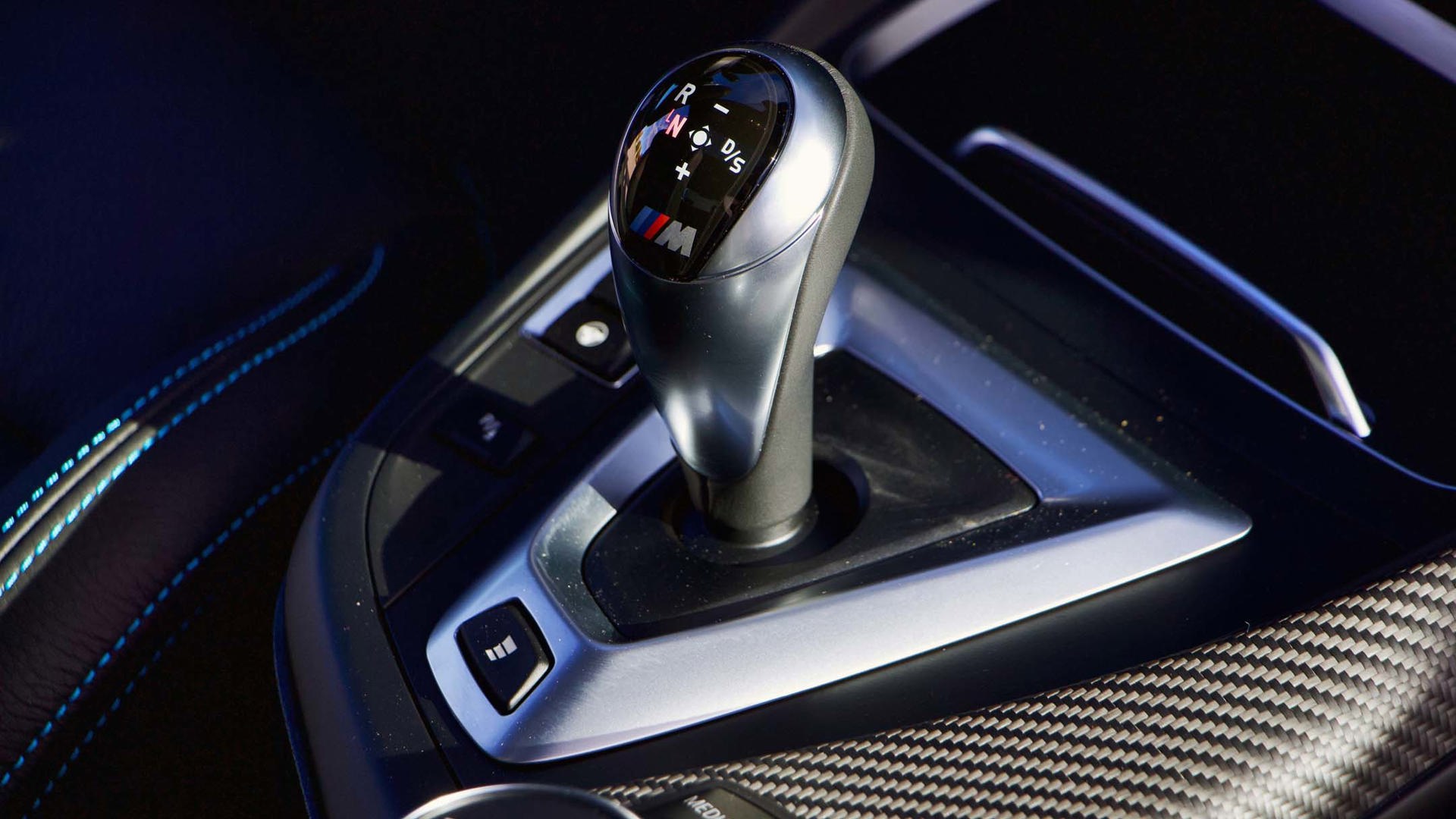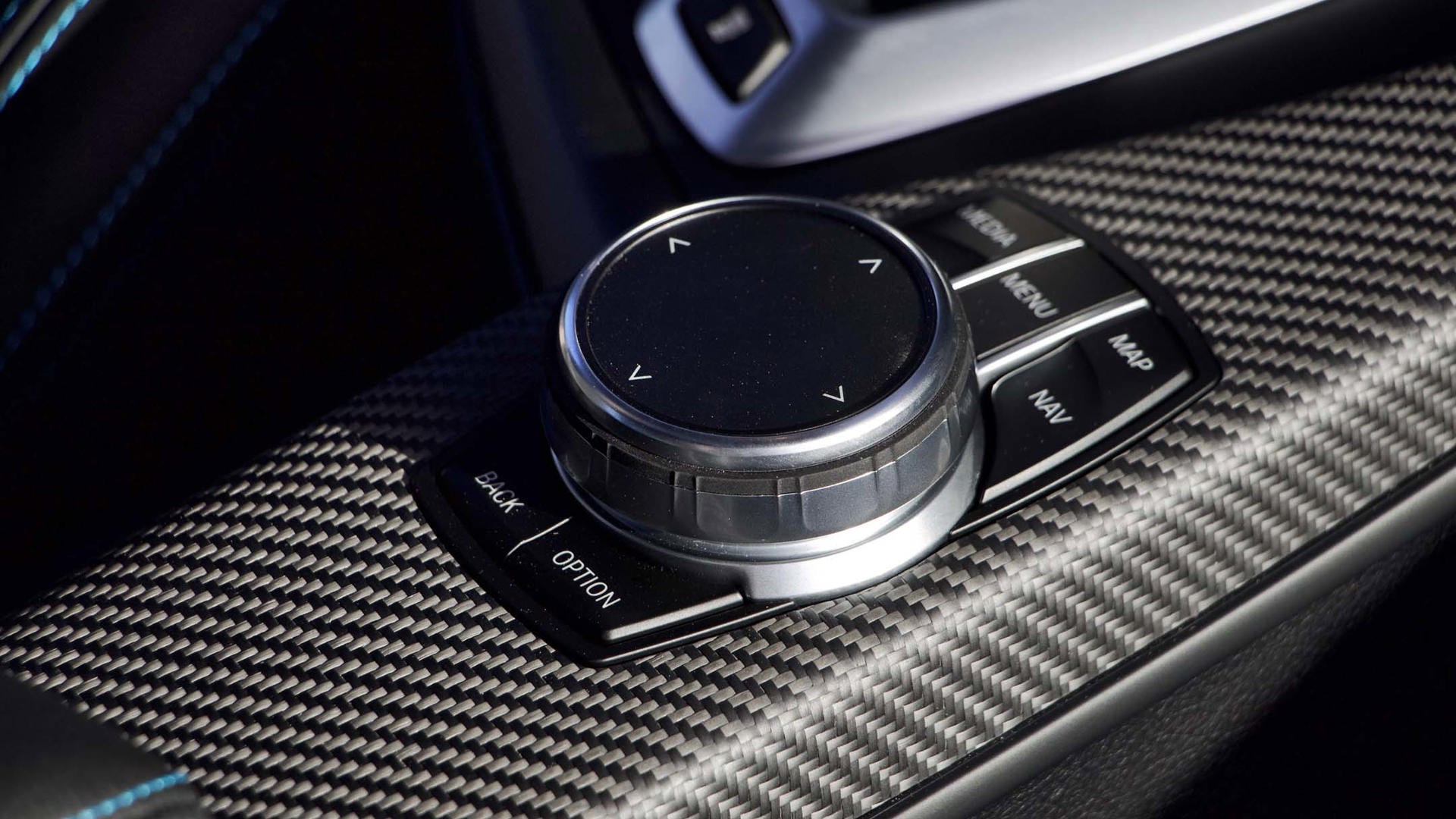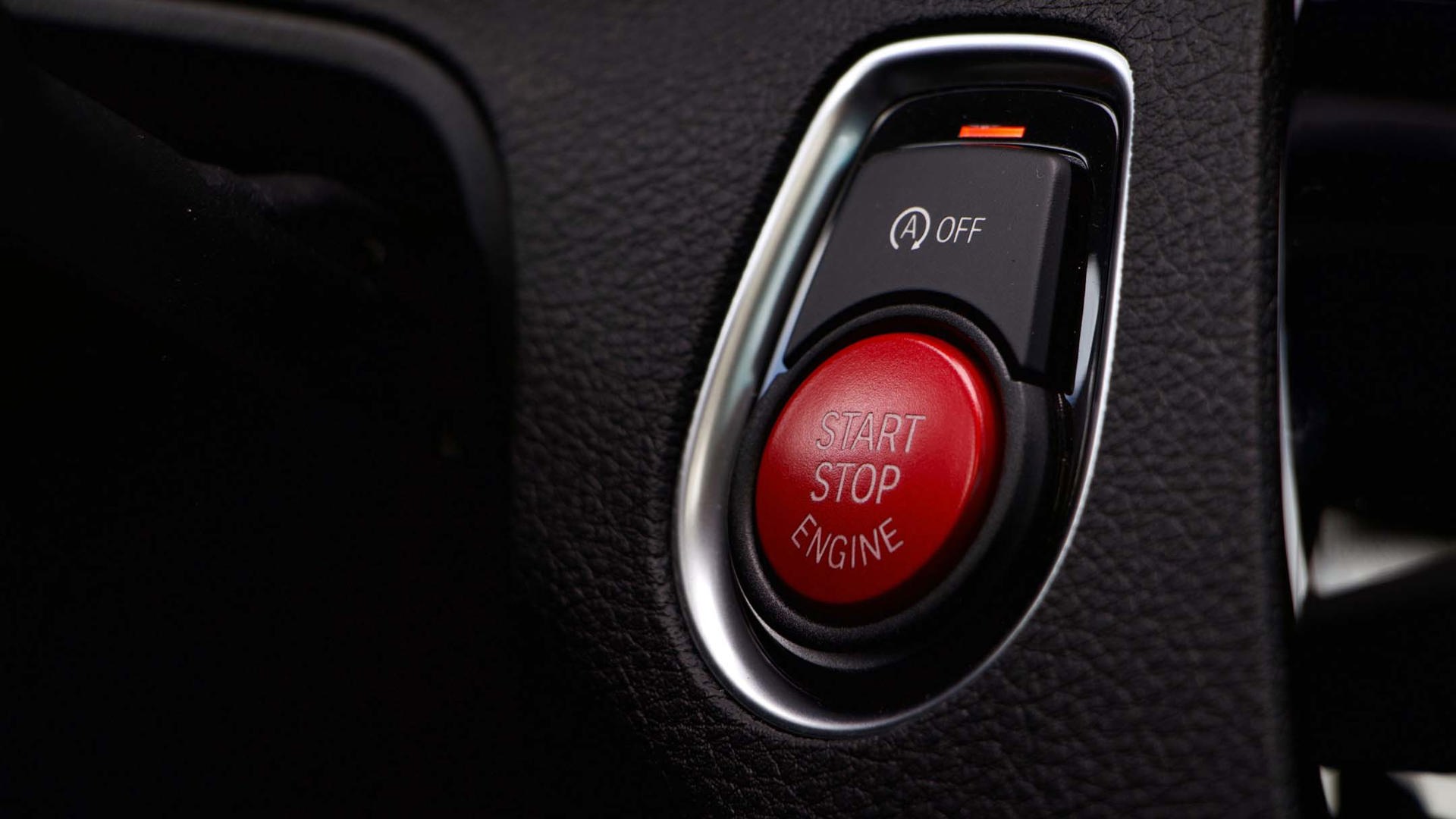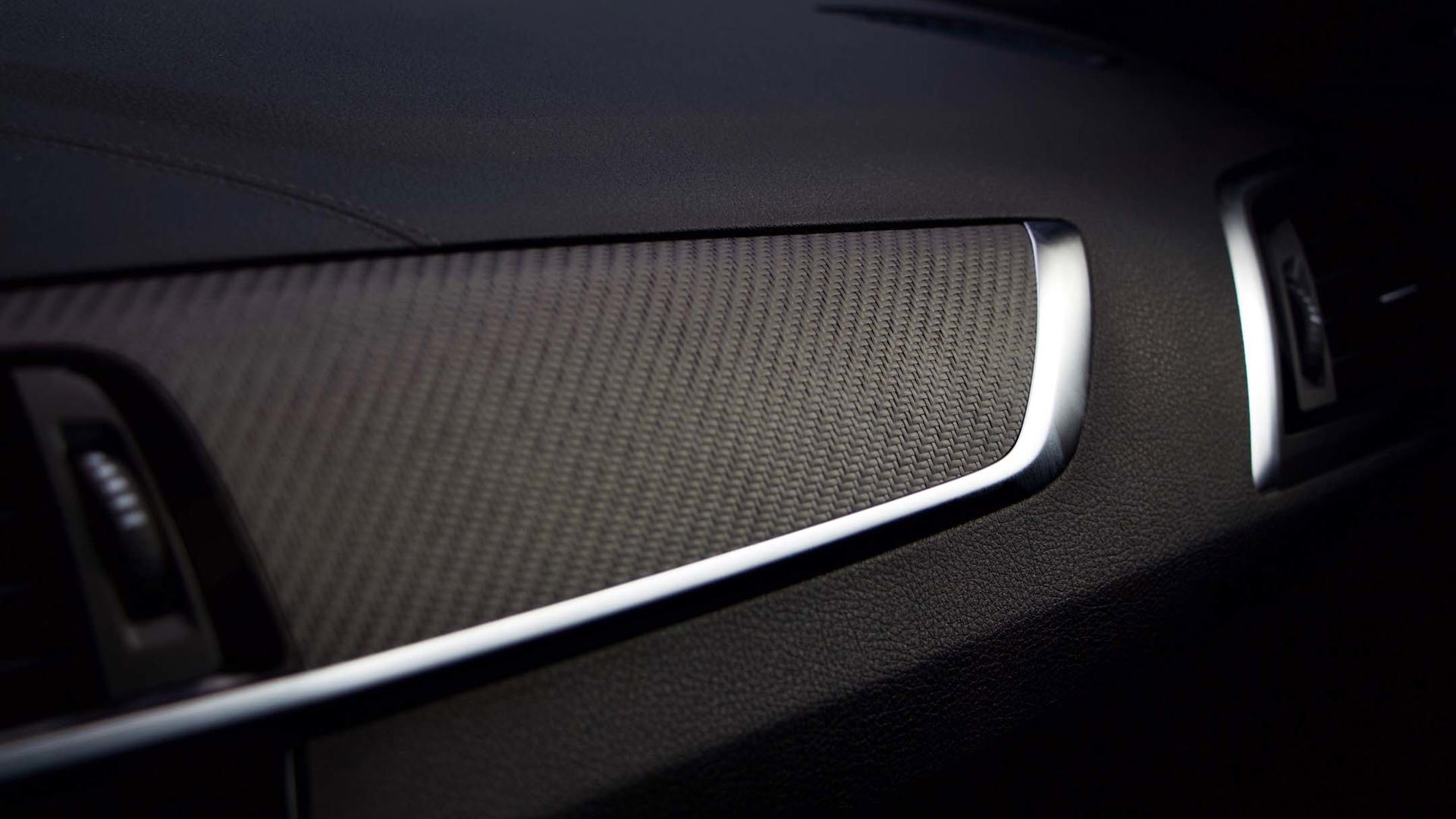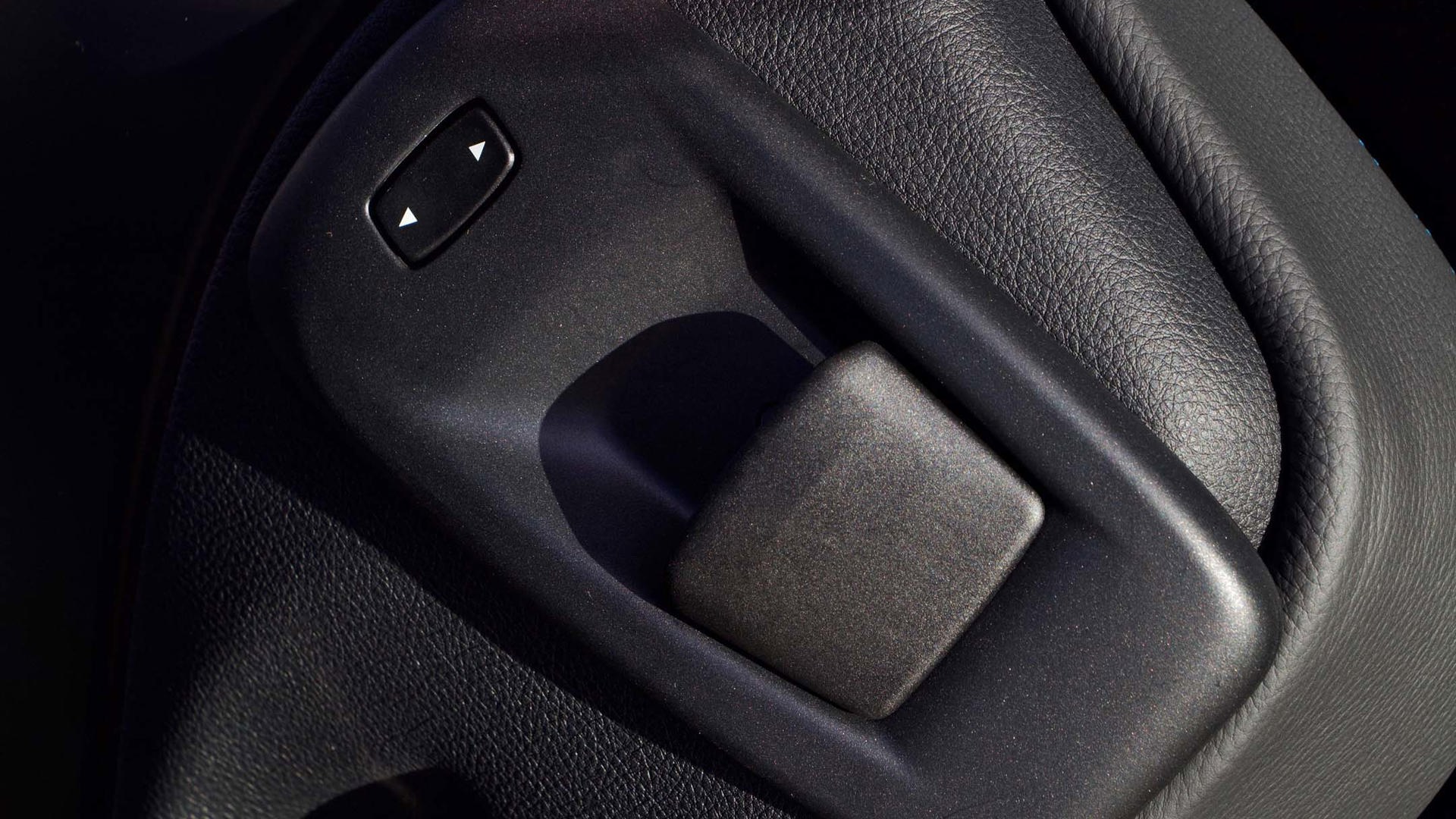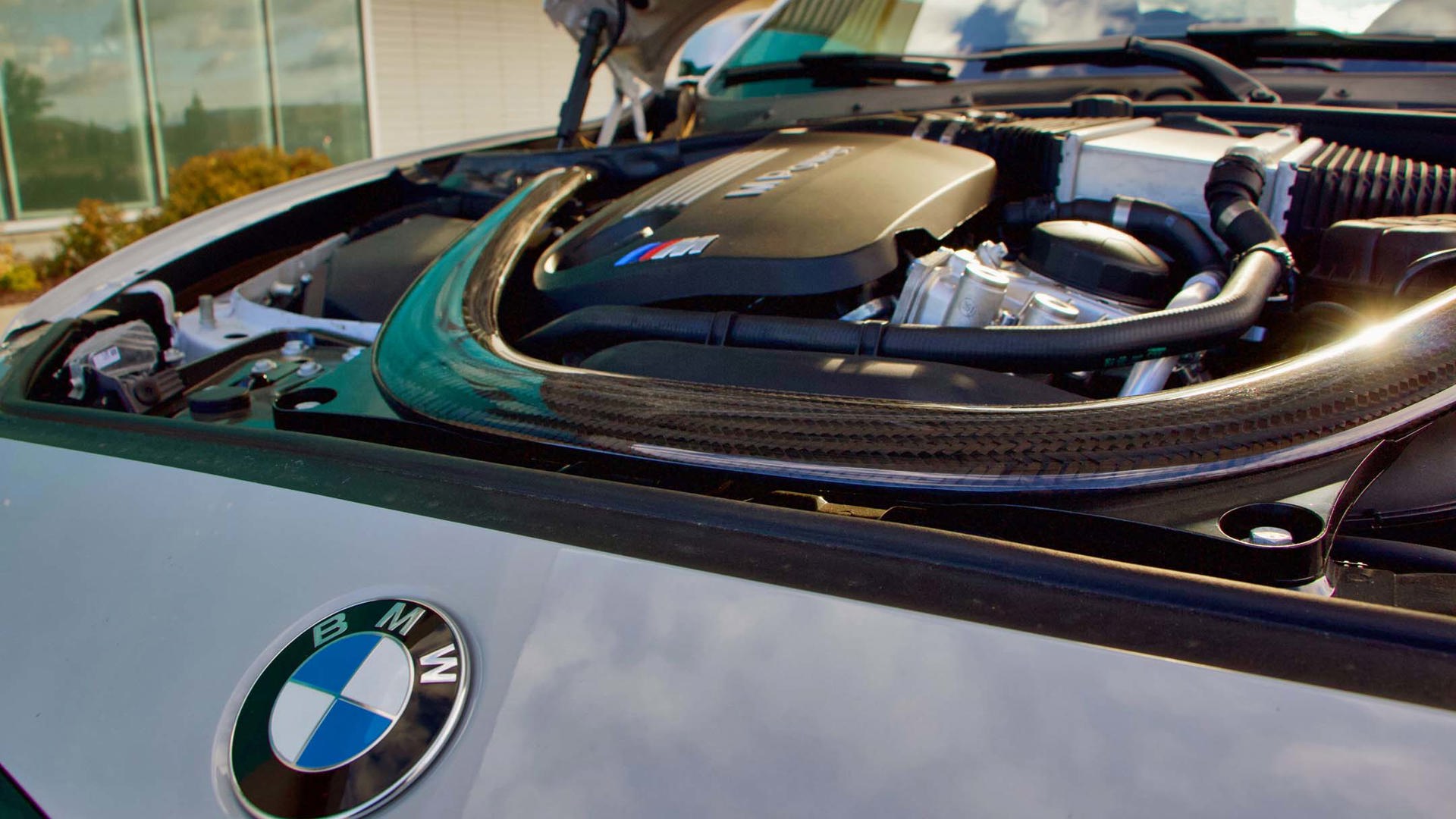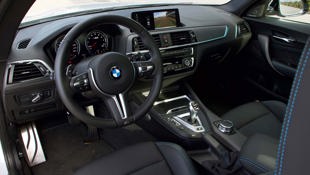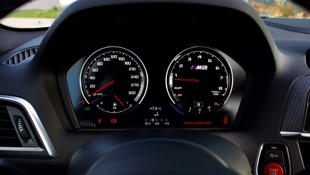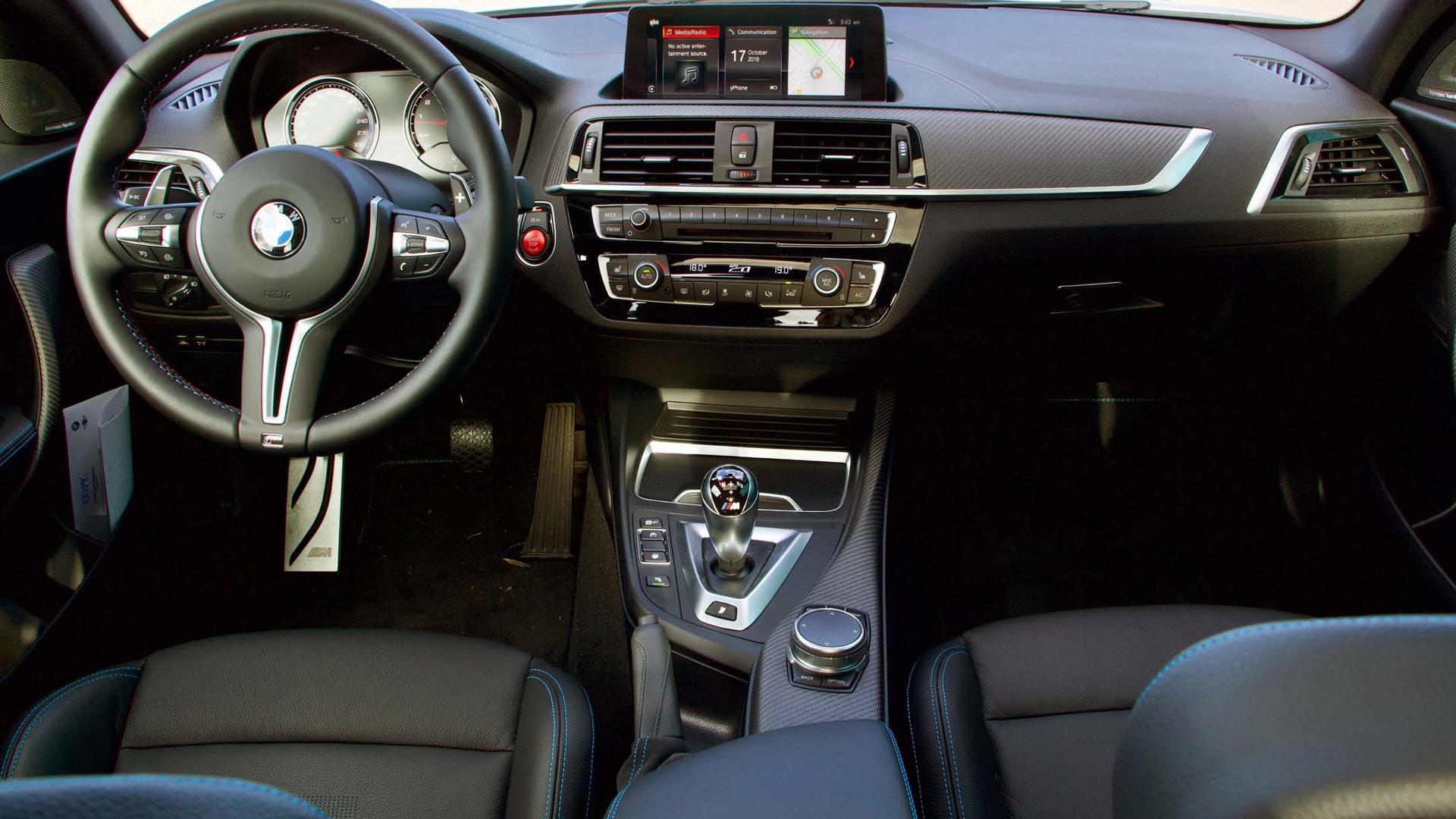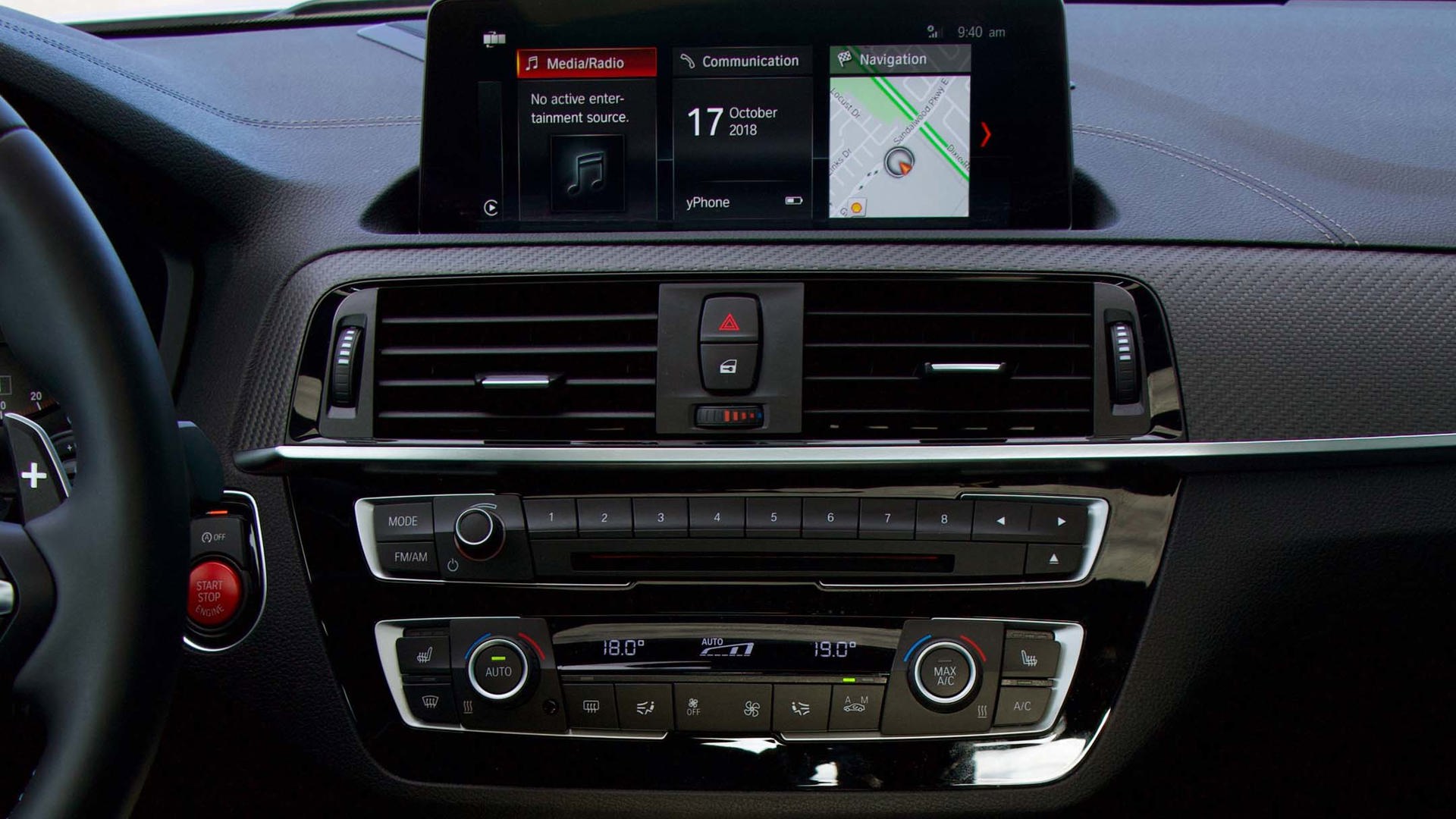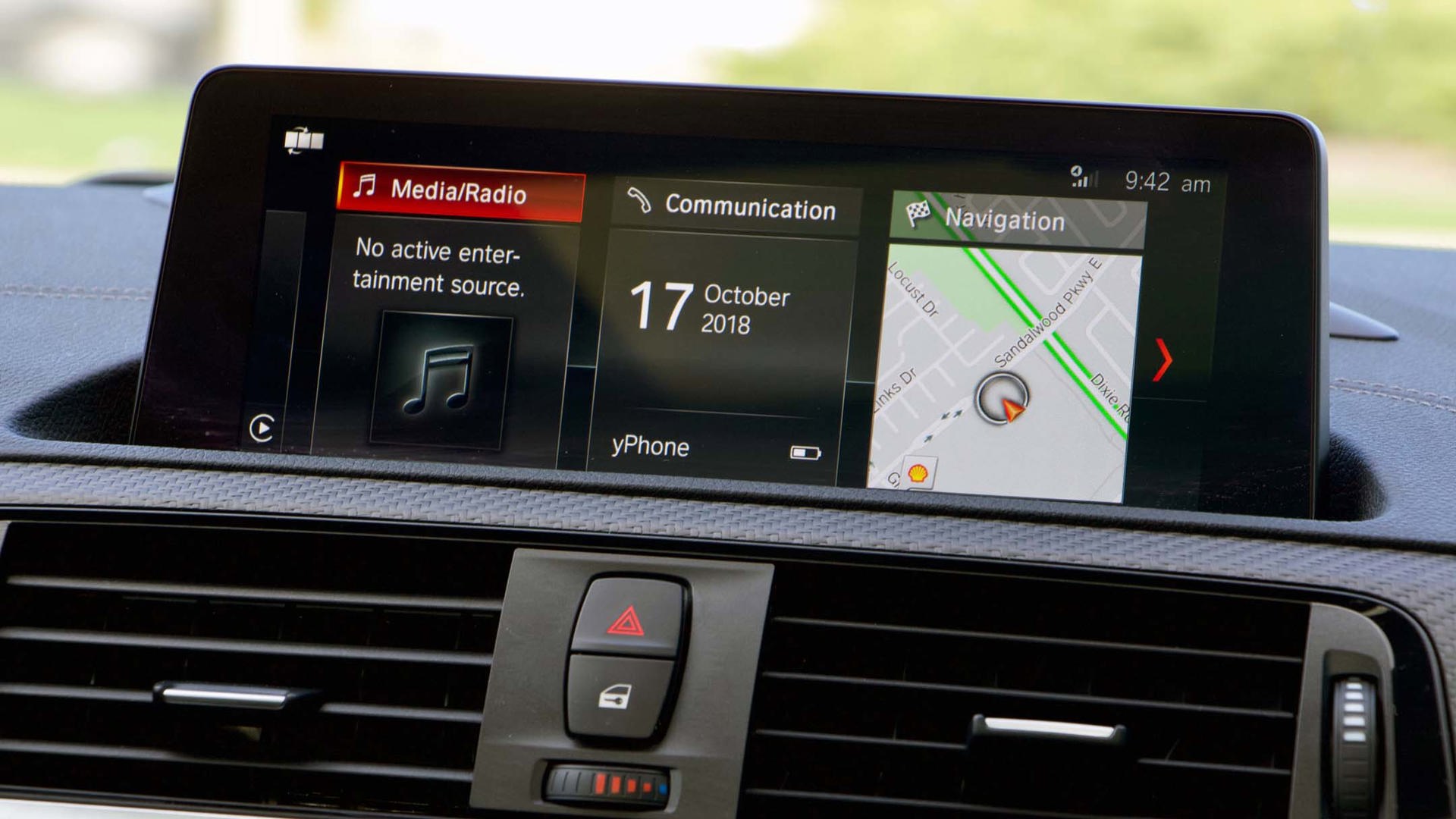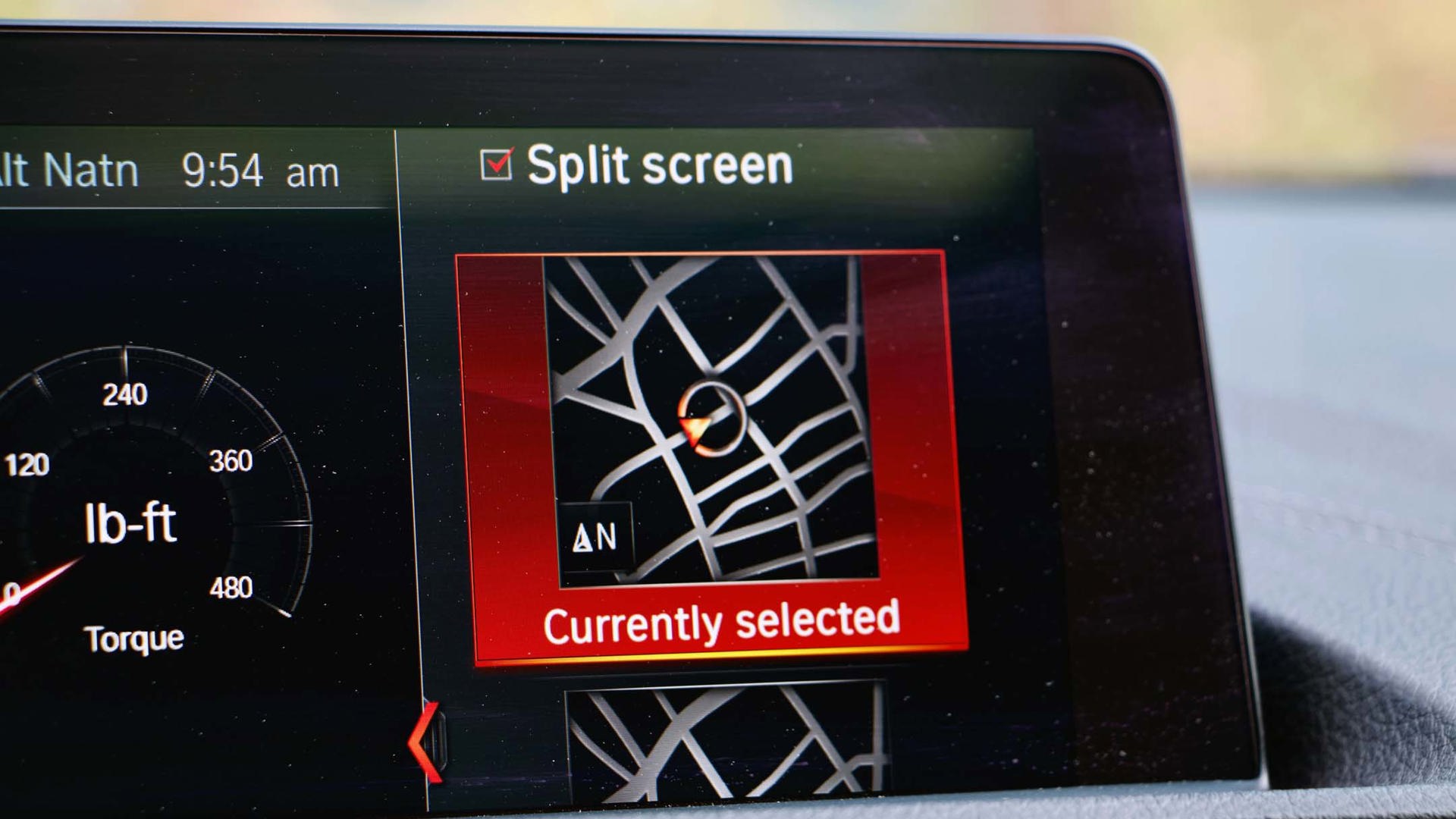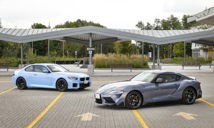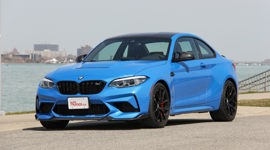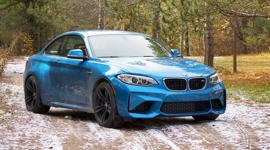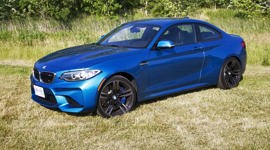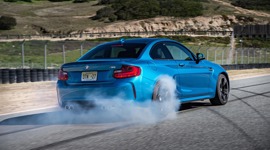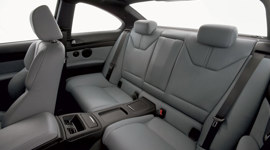 AutoTrader SCORE
AutoTrader SCORE
-
STYLING9/10
-
Safety9/10
-
PRACTICALITY5/10
-
USER-FRIENDLINESS8/10
-
FEATURES8/10
-
POWER10/10
-
COMFORT4/10
-
DRIVING FEEL9/10
-
FUEL ECONOMY6/10
-
VALUE7/10
Many of the cars BMW makes today are serious. Seriously luxurious, seriously practical, seriously powerful, and seriously fast. The 2019 BMW M2 Competition may be a bit of all of those things, but it is never serious. Nope. In fact, the overwhelming impression I got from the M2 is that it is constantly wearing a shit-eating grin and taunting you to do something completely awful. It is the charismatic juvenile delinquent that pretty much doesn’t know how to do anything but have fun.
A handful – in all the right ways.
Power Play
But let’s back up a second here and go over the basics. The 2019 BMW M2 Competition essentially replaces the 2018 M2, which was already the wild child of the BMW lineup. The M2 was no slouch with 365 hp at 6,500 rpm and 343 lb-ft of torque from 1,400 to 5,560 rpm, with an overboost function taking it to 369 lb-ft for brief bursts. The M2 Competition won’t need no overboost because it’s strapping 406 lb-ft from 2,350 rpm to 5,230 rpm to go along with its 405 hp at 5,230 to 7,000 rpm. Don’t forget, the M2 weighs just 1,658 kg with the dual-clutch auto and even less with the manual transmission.
That’s right, a manual transmission. BMW still offers up an honest-to-goodness three-pedal row-your-own setup, but I can only dream of its nice tight throws, auto-rev-match blipping, and heavy clutch. Unfortunately, BMW sent us an automatic-equipped car. For engagement I’d take the manual every time, but for speed you want the M Double Clutch Transmission, as it shaves a couple decimals off the 0–100 km/h sprint, 4.2 seconds rather than a leisurely 4.4.
The M DCT’s seven gears start off shorter than the manual, so it has more intense power delivery at low speeds, and the extra gear is a second overdrive that gives it better highway fuel consumption while top speed is the same electronically limited 250 km/h with the option to unlock it up to 280. Although official NRCan estimates have not been released for the 2019 Competition, the 2018 M2 DCT was a reasonable 11.8 L/100 km in the city, 8.9 L/100 km on the highway, and 10.5 L/100 combined, the manual a bit worse in every category.
The short gearing and big power boost are a recipe for frantic acceleration, but the cold snap and summer tires during my week meant that it was more antics than frantic. Pretty much every hard launch set the back end trying to overtake the front, and even moderate acceleration into turns kicked the rear tires loose on cold mornings. After the tires warm up, they go a long way to keeping the back end planted, but it’s still a handful – in all the right ways. Although the back end comes loose easily, the car has such a spectacularly communicative and balanced chassis that it requires next to no conscious thought to keep it from getting too sideways – a tug of countersteer plus perhaps a bit of an extra dose of throttle holding it for a split second before it finds purchase and catapults back onto your intended course.
Fancy Footwork
Although the M2 Competition is faster than last year’s M2, it’s just 0.1 seconds quicker, so the power is felt more in mid-range acceleration than standing starts. When everything is lined up and the tires are sticking, the power surge is thrilling, pinning you into the seat and feeling like you hit warp speed momentarily before good sense prevails and you back off throttle. Of course, peak performance is accessed via drive mode settings for the engine, transmission and other car systems, but you can keep the car sedated in the comfort modes, and set up the two M buttons on the steering wheel for your preferred profile, allowing you to quickly switch at any time.
With greater acceleration must come greater stopping power, so BMW beefed up the brakes for the Competition. Front brakes go from four-piston calipers clamping down on 380-mm rotors to six pistons and 400-mm rotors; and at the back the rotors go from 370 to 380 mm and the calipers from two-piston to four-piston. The first few days driving the M2 Competition, jerky, abrupt stops were a common occurrence because they bite so hard, but eventually I learned to be a modulate them a little better for smooth stops, but their stopping power was never in question. Once I had a better feel for their immediacy, I was able to use them effectively for braking into corners and giving the nine-inch-wide Michelin Pilot Super Sports at the front extra grip, while the one-inch-wider rears held on for dear life.
Even though the chassis lets you know what’s going on through its incredibly stiff setup, the steering itself isn’t communicative in the old-fashioned sense. However, it is steady and accurate, making it easy enough to dial in just the right amount of steering angle with confidence. It’s the one disappointing element in an otherwise impeccable driving experience you’d expect from BMW sports car.
Inside
However, the M2 is more practical than you might imagine. Although it’s a two-door coupe, the rear seats are more spacious than the back of a Ford Mustang according to my kids, and for a small car, it’s also not bad for cargo space. The 390 L is more than enough for a couple hockey bags and the rear seats split 40/20/40, so you can use the middle section as a pass through for sticks or skis or boards, etc.
The front seats are adjustable every way you can imagine or needing between the adjustability and support, they are comfortable yet secure during hard cornering, with two memory positions for different drivers. They look great too, with an illuminated M logo in the back rest, and blue contrast stitching. Once ensconced in the seat, the controls all fall perfectly in hand, with a fat-rimmed steering wheel wrapped in genuine leather and stitched together in the M division’s signature two blues and red.
With your right elbow on the centre-console armrest, the iDrive controller falls perfectly to hand and the shifter is just a short reach away. While its position is perfect, its operation might take some getting used to: there is no Park, and it must be kept in Drive or Reverse gear when shutting the car down, and that puts it into Park. It’s a weird idiosyncrasy with the M DCT, but I imagine you get used to it after a while as you would with any of the new transmission controllers being introduced these days. More importantly, the transmission is fairly well behaved for commuting duties in comfort mode, the gear changes detectable but not disturbing, and a muted throttle helping you blend with traffic with less jerkiness, but adaptive cruise is not available, even as an option.
Features and Value
Another feature that might help make the commute a little more peaceful is the traffic-based route guidance available in the car’s navigation system, or your preferred smartphone app like Google Maps, Waze, or Apple Maps. Being a top model already, Apple CarPlay and Android Auto are standard, as is BMW’s extended Connected services, like weather and Yelp and other online features, though you would have to foot the bill for a data package. The wireless charging pad and Wi-Fi hotspot is an extra charge ($350), as is the sunroof ($1,500) and upgraded Harman Kardon stereo ($1,000), but all of those together don’t add up to the big premium for the dual-clutch auto ($3,900).
Starting at $71,250 plus a $2,245 destination charge, the M2 is up against some serious sports cars, but its archrivals are undoubtedly the 400-hp Audi TT RS, which starts at a similar price but comes standard with all-wheel drive and dual-clutch gearbox. As much as they are similarly sized and compete directly with each other, they are surprisingly different in character, the TT RS offering better value if you are looking for year-round usability. The M2, on the other hand, is a purist’s machine, rear-wheel drive and available with a manual transmission in an age of computer-controlled everything.
Other brands and newer BMW M cars are turning to all-wheel drive to handle all that power for greater acceleration and lap times, but the current M2, M3, and M4 still have that traditionalist rear-wheel drive layout and manual transmission. The M2 is most affordable point of entry for one of those M cars, and it strikes a difficult balance between modern amenities and control and BMW’s captivating driving experience heritage. The electronics are all there as a safety net, but the M2 flat-out loves to play, the rear-wheel drive and big power always on display and front of mind, with a chassis that fills in the gaps left by the numb steering. The M2 Competition now has power to spare and continues to improve its performance, further cementing its character as a true sports car and heightening its capabilities as a track-day standout.
| Engine Displacement | 3.0L |
|---|---|
| Engine Cylinders | I6 |
| Peak Horsepower | 405 hp |
| Peak Torque | 406 lb-ft |
| Fuel Economy | 12.7/9.2/11.1 L/100 km cty/hwy/cmb |
| Cargo Space | 390 L |
| Model Tested | 2019 BMW M2 Competition |
| Base Price | $71,250 |
| A/C Tax | $100 |
| Destination Fee | $2,480 |
| Price as Tested | $80,580 |
|
Optional Equipment
$6,750 – Wireless charging pad and Wifi Hotspot $350; Glass sunroof $1,500; Harman Kardon stereo $1,000; M Double Clutch Transmission $3,900
|
|
